Of all major powers of the 2nd world war, Japan is probably the nation least documented. Outside of the general information, few details have been preserved, indexed and published.
This also is the case with the painting systems used by the Japanese Army and Navy Air Forces. While systems such as the RLM have been heavily researched and documented, a lot of information about Japanese systems is still undiscovered, and what is known is often purely empirical, based on old photographs and painting chips. The information that has been discovered is often not widely known and published on the internet. A lack in the subject perhaps? Nevertheless I’ve tried to create a comprehensive list of all the Japanese paints. Nothing here is primary research. Merely snippets of information I’ve locate on the abandoned corners of the web and scruffy books.
As with all pages of this type, the colours shown are an approximation. Monitors can change the colour displayed and don’t account for shading and glossiness. In reality these colours would also fade over time, and different batches had different tones.
Army: Kōkaku 39 / 航格39
The 陸軍航空機材料規格 航格第39 (Rikugun kōkūkizairyō kikaku kō-kaku dai 39, Army Aircraft Material Standards, Air Grade 39), or Kōkaku 39 was a standard for paints used by the IJAAF.
| Code | Colour | Equivalent | Mr. Color | Tamiya | Vallejo | Hataka | MRP | AK | Ammo MIG |
| #1 灰緑色 |
Hairyokushoku Gray Green ash green |
FS-25622 Thorpe A4 |
C-128 | XF-12 | 71326 | MRP-415 MRP-416 |
AK11899 RC328 AK2261 |
MIG 258 | |
| Standard overall colour of aircraft from 1936-1945 Underside colour on some late war aircraft Control surfaces on bare metal aircraft The precise appearance is still argued about. Aviation of Japan – Army Hairyokushoku Part 1 |
|||||||||
| #2 黄橙色 |
Tohohshoku Yellow Orange |
||||||||
| Overall trainer Colour | |||||||||
| #3 灰藍色 |
Hairanshoku Ash Indigo |
FS-25053 ? | MRP-417 | AK11900 RC329 AK2262 |
|||||
| Interior Primer from 1936-1943, replacement of Aotake of army air craft. In practice this only happened for crew areas and Aotake kept being used as primer for other internal areas. Known aircraft with this paint are the Type 91, Ki-21, Ki-27, Ki-36, Ki-43, Ki-44 and Ki-48 Different Sources often depict this colour as a lot less blue. The swatch included in 航格第8609 shows the superseding, but identical 2-1 colour as this however. |
|||||||||
| #4 赤褐色 |
Seki-Kashoku | ||||||||
| Propeller and Spinner Colour | |||||||||
| #5 銀色 |
Gin-Iro Silver |
C-008 | XF-16 | 71062 | HTK-*078 | MRP-009 | AK11207 RC020 AK479 |
||
| bare metal | |||||||||
| #7 黄緑七号色 |
Ohryoku Nana Go Shoku Olive Brown |
FS-33070 | C-304 | XF-58 | 71286 | HTK-*018 | MRP-418 | AK11901 RC330 AK2263 |
MIG 926 |
| On the 14th of June 1944 a revisited ‘Rikugun kokuki tosou kitei’, Army Aircraft Painting Regulation was distributed. The new regulations weren’t applied immediately, with new aircraft only appearing from August onward, the Hayate even waiting to October. Exterior colour from June 1944 onwards Interior colour from June 1944 onwards Aviation of Japan – Useful colours ~ Army interiors part 2 AviationOfJapan – More about JAAF # 7 |
|||||||||
| #9 赤色 |
Akaiiro | ||||||||
| Insignia’s | |||||||||
| #10 赤色 |
Awai aka iro | MRP-411 | |||||||
| Hinomaru’s | |||||||||
| #11 黒色 |
Kuro iro black |
C-33 | XF-1 | 71057 | HTK-*041 | MRP-005 | RC001 | MIG 046 | |
| Anti-Glare paint | |||||||||
| #12 白色 |
Shiro iro White |
C047 | |||||||
| #13 青色 |
Ao iro blue colour |
||||||||
| Potentially used in cockpits as alternative to #3 Hairanshoku http://www.aviationofjapan.com/2009/08/useful-colours-army-interiors-part-one.html |
|||||||||
| #14 黄色 |
Ki iro |
FS-33538 | C-4 | XF-3 | 71002 | HTK-*066 | MRP-419 | RC008 | MIG 048 |
| Identification markings overall colour of training aircraft overall colour of experimental aircraft |
|||||||||
| #17 淡青色 |
Tan Sei Shoku |
FS-25352 | |||||||
| http://www.aviationofjapan.com/2009/02/ki-43-iii-ko-colours-part-3.html Intermediate coating for aircraft exterior surfaces |
|||||||||
| #21 緑色 |
Midori iro Green IJA Green |
FS-34108 | C-129 | XF-13 | 71285 | HTK-*242 | MRP-420 | AK11902 RC331 AK2264 |
MIG 264 |
| Standard camouflage green of the Imperial Japanese Army aircraft, originally intended to be used with #27 Ao Midori Iro (Blue Green) in Luftwaffe style, later solid or mottle; in use in 1941-1945. Used for the noses and tails of bombs |
|||||||||
| #22 濃緑色 |
Noh Ryoku Shoku Deep green |
||||||||
| #26 | An Ryoku Shoku | ||||||||
| #27 青緑色 |
Ao Midori Iro Blue Green |
FS-34036 Navy D2 |
MRP-421 | AK11903 RC332 AK2265 |
|||||
| Standard camouflage green of the Imperial Japanese Army aircraft, originally intended to be used with #21 Midori Iro (Green) in Luftwaffe style, later solid or mottle; in use in 1941-1945. | |||||||||
| #29 黄緑色 |
Ki Midori Iro Yellow Green |
FS-34259 FS-34151 |
AK11904 RC333 AK2266 |
||||||
| Aircraft interior colour used by the Imperial Japanese Army from circa 1943 Drop tanks |
|||||||||
| #30 枯草色 |
Karekusa Iro Dry Grass Colour |
HTK-*243 | MRP-422 | AK11905 RC334 AK2267 |
|||||
| Standard camouflage color of the Imperial Japanese Army aircraft, used together with green colours in the 1937-1945 period | |||||||||
| #31 茶褐色 |
Cha Kasshoku Tea Colour |
HTK-*241 | MRP-423 | AK11906 RC335 AK2268 |
|||||
| Standard camouflage colour of the Imperial Japanese Army aircraft, used together with greens in the 1937-1945 period. | |||||||||
| #32 黒藍色 |
Koku Ran Shoku black indigo colour |
||||||||
| A very dark, blackish blue colour with slight purple undertones, Like an Eggplant. Anti glare panels and cowlings. Nicholas Millman, Ki-61 and Ki-100 Aces (2015) Osprey Publishing |
|||||||||
| #33 柿色 カーキ色 |
kaaki iro Khaki |
||||||||
| #37 | An Kasshoku |
||||||||
| Propeller colour | |||||||||
| #38 濃暗褐色 |
Noh An Kasshoku | ||||||||
| #39 草色 |
Kusa iro |
||||||||
|
#43 |
|||||||||
| The exact shade, purpose and usage of this colour remain unknown, however it must have hold some significance, as it was included in 航格8609 as similar to 2~7. | |||||||||
| #43 | Tochi Iro Soil colour |
||||||||
| The exact purpose and usage of this colour remain unknown, however it must have hold some significance, as it was included in 航格8609 as 2~2. Aviation of Japan – Kawasaki Ki-100 Fighter Colours |
|||||||||
| 黒褐色 | Kuro Kasshoku black brown |
||||||||
| Overall colour of some Ki-100’s. Possibly a very dark variant of #7. The name is sometimes mistranslated to English as ‘charcoal’, resulting in planes depicted as black instead of very dark brown. Aviation of Japan – Kawasaki Ki-100 Fighter Colours Nicholas Millman, Ki-61 and Ki-100 Aces (2015) Osprey Publishing |
|||||||||
Late war propeller color
Starting mid 1944 propellers on some aircraft were painted green. Confirmed aircraft are Ki-43-III, Ki-84, Ki-87, Ki-94, Ki-100, Ki-102 and Ki-106. This colour has no know standard attached. There are multiple variations of this shade known.
http://www.aviationofjapan.com/2019/12/army-prop-and-spinner-colours.html
| Code | Colour | FS equivalent | Mr. Color |
Tamiya | Vallejo | Hataka | MRP | AK | Ammo MIG |
| Propeller Green | Green Grey | FS 14159 | XF 22 | 70830 | RC211 | MIG 240 | |||
| Later war propeller colour | |||||||||
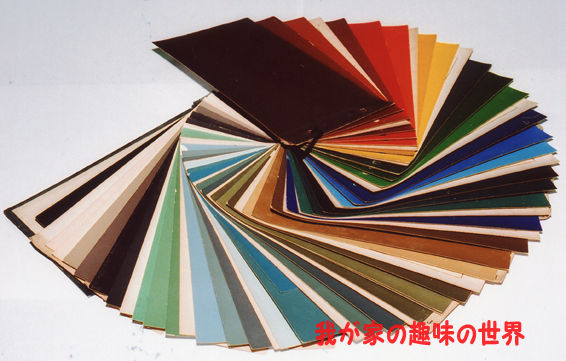
Near the end of the war shortages were more and more common. As a result there was a push to standardize the paints between the army and navy air forces. As a result on February 5 1945 the “Japan Aircraft Standards No. 8606 Aircraft Paint color standard” was distributed ( 日本航空機規格規 第8606航空機用塗料色別標準 ). Not all colours in it were used. Very limited information of the application of this system is available as far as I’ve found.
Simular to Kari Kikaru 117, the colors are grouped by shade. As far as I’m aware no official names for the colours exists, just for the shades.
| Swatch | Code | Colour | Munschell | Gunze | Tamiya | Vallejo | Hataka | MRP | AK | AMMO-mig |
|---|---|---|---|---|---|---|---|---|---|---|

| A1 褐色 | brown | 10R 3/2 | |||||||
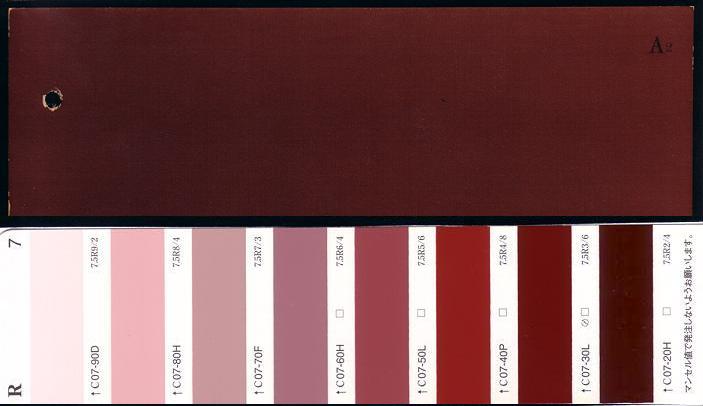
| A2 褐色 | brown | 7.5R 3/6 | |||||||
| Primer for metal surfaces Intermediate coat for fabric surfaces propeller blades and spinners | ||||||||||
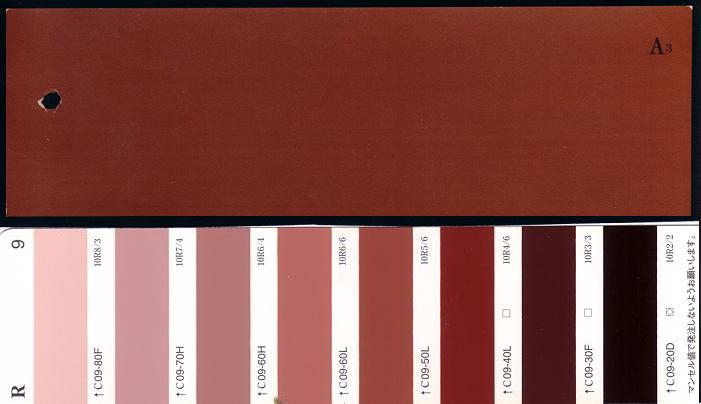
| A3 褐色 | brown | 10R 4.5/6 | |||||||
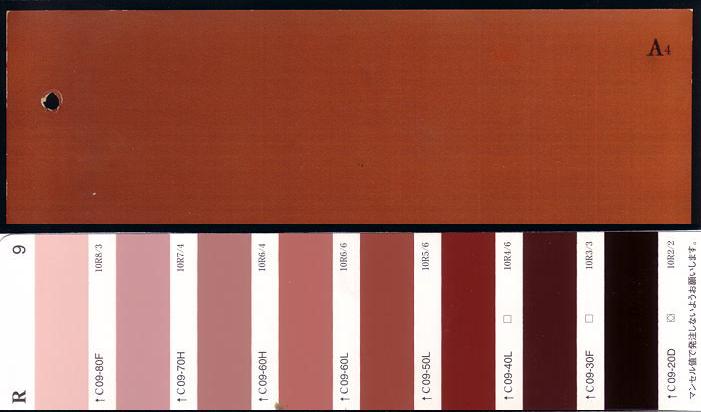
| A4 褐色 | brown | 10R 5.5/6 | |||||||
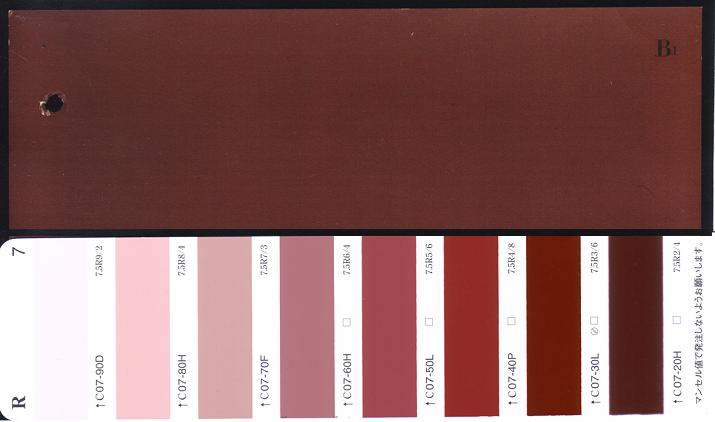
| B1 赤色 | red | 7.5R 3/4 | |||||||
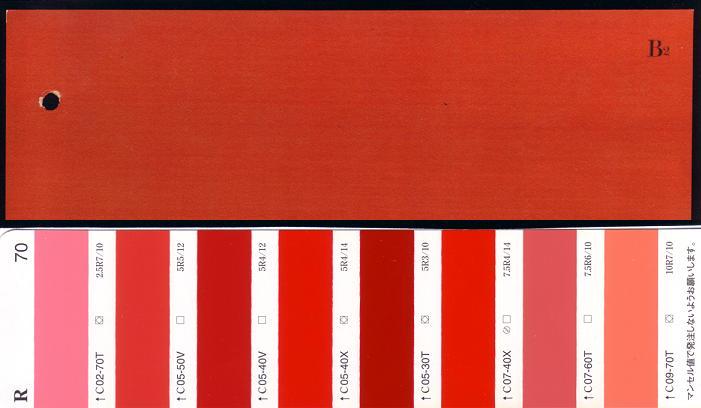
| B2 赤色 | red | 5R 4/12 | |||||||
| Markings Hinomaru’s | ||||||||||
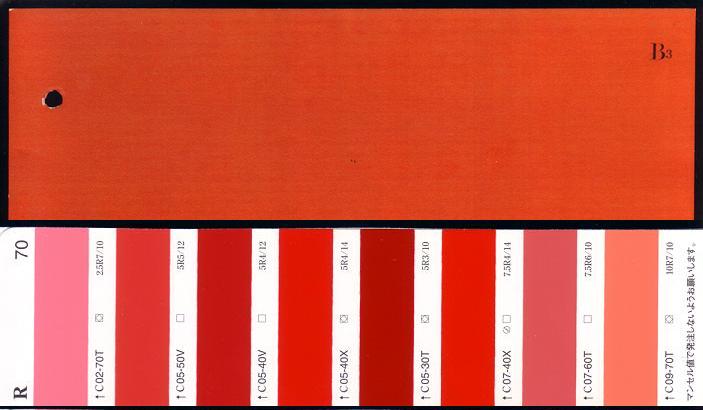
| B3 赤色 | red | 7.5R 4/14 | MRP-411 | ||||||
| Hinomaru colour up and to 1943 | ||||||||||
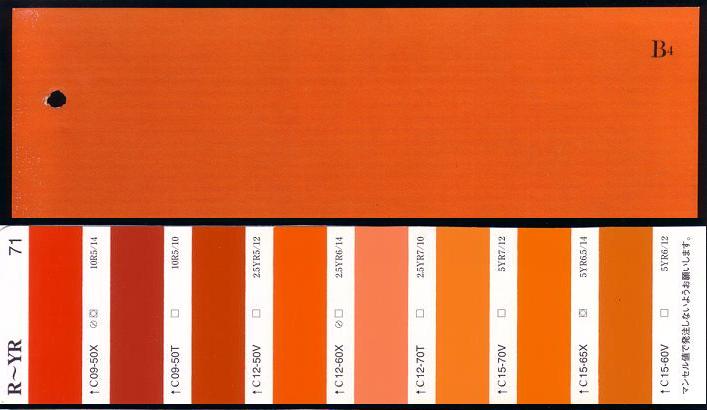
| B4 赤色 | red | 2.5YR 6/14 | |||||||
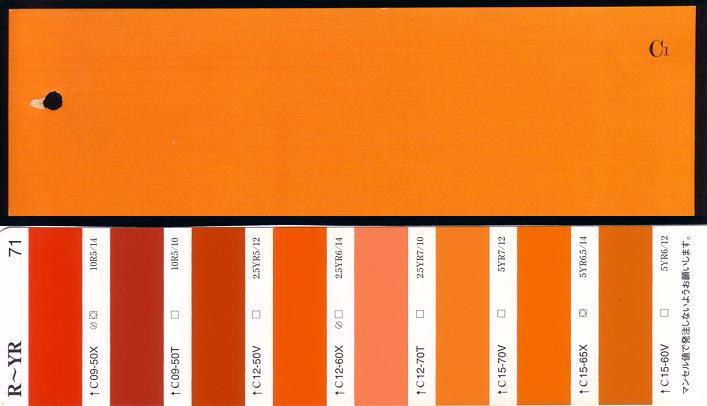
| C1 黄色 | Yellow | 5YR 6.5/12 | |||||||
| Warning colour, Propeller tip colour | ||||||||||
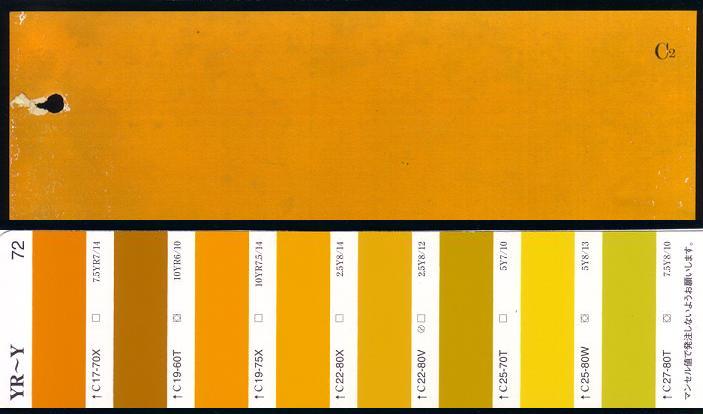
| C2 黄色 | Yellow | 10YR 7.5/14 | |||||||
| trainer and experimental aircraft colour | ||||||||||

| C3 黄色 | Yellow | 2.5Y 8/12 | |||||||

| C4 黄色 | Yellow | 4Y 8/13 | |||||||
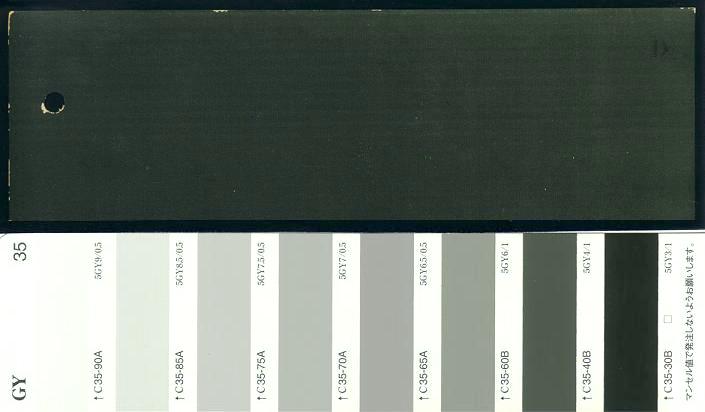
| D0 緑色 | Green | 5GY 3.5/1 | |||||||
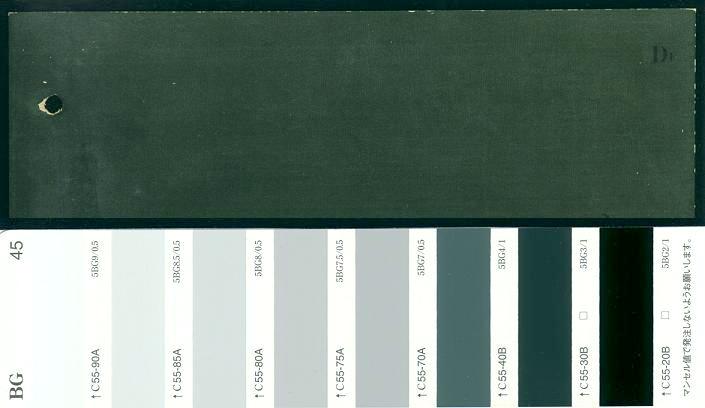
| D1 緑色 | Green | 5BG 3/1 | XF-11 | 71325 | AK11893 RC304 AK2063 | ||||
| upper side camouflage. Experimentally used as an upper surface camouflage on A6M2 “ヨ-109” as mono, and with J3 on “ヨ-107”. The experiment with mono D1 over J3 underside was accepted for standard use in 1944. cockpit panel colour of at least the Kyūshū Q1W Tokai. | ||||||||||

| D2 緑色 | Green | 10GY 3/2 | 71322 | MRP-425 | AK11894 RC305 AK2064 | ||||
| Camouflage paint | ||||||||||

| D3 緑色 | Green | 2.5G 3/3 | |||||||
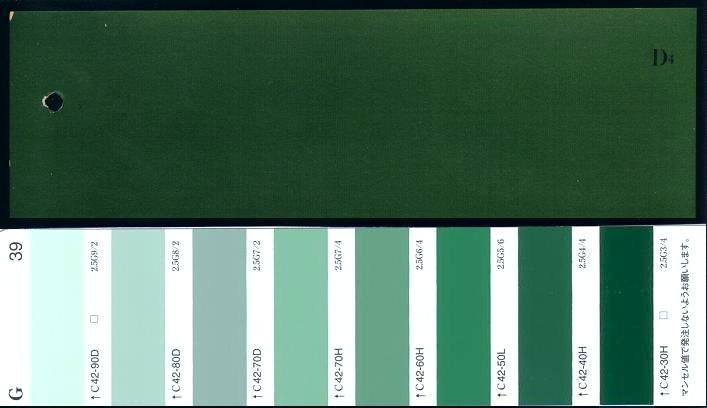
| D4 緑色 | Green | 2.5G 3.5/4 | |||||||
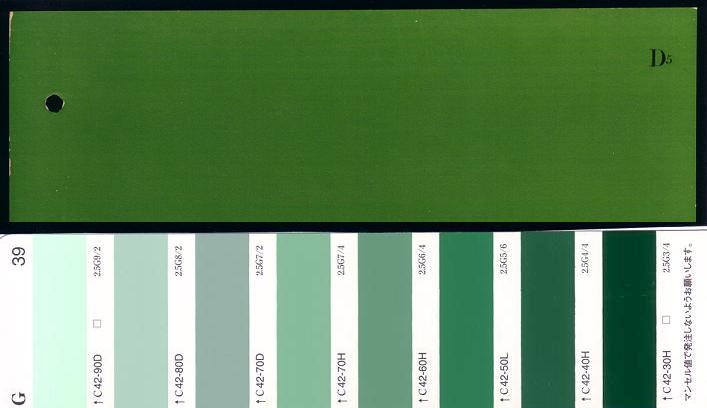
| D5 緑色 | Green | ||||||||
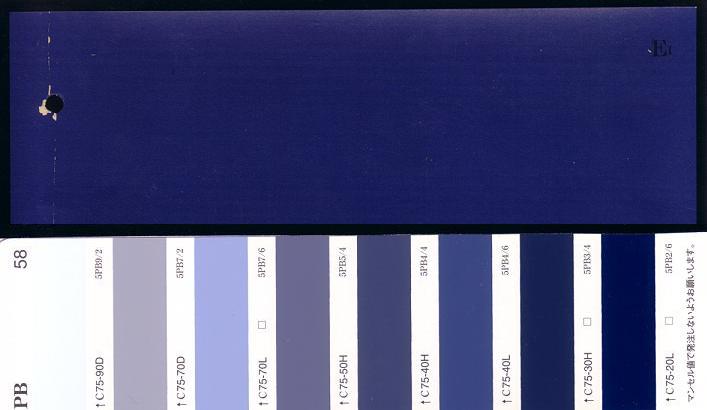
| E1 青色 | Blue | ||||||||
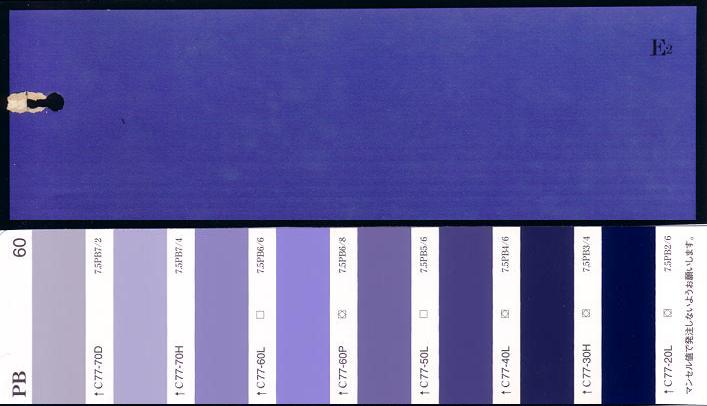
| E2 青色 | Blue | ||||||||
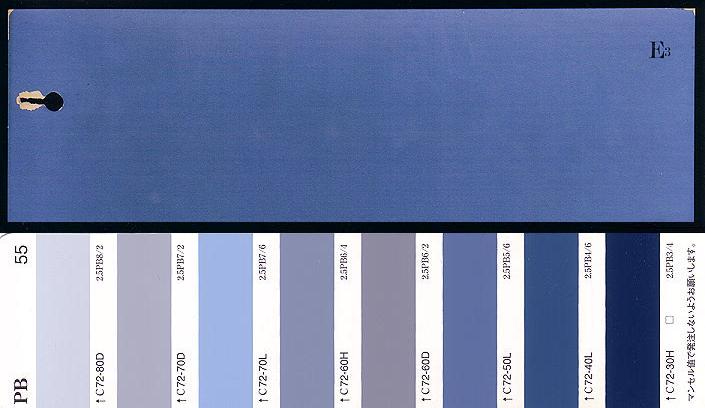
| E3 青色 | Blue | ||||||||
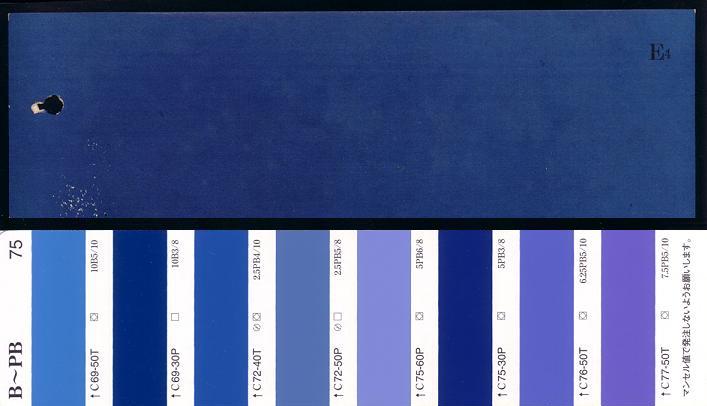
| E4 青色 | Blue | ||||||||
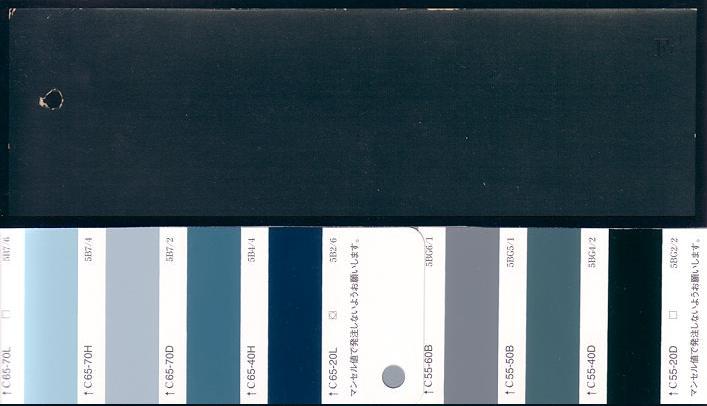
| F1 藍色 | Indigo | ||||||||
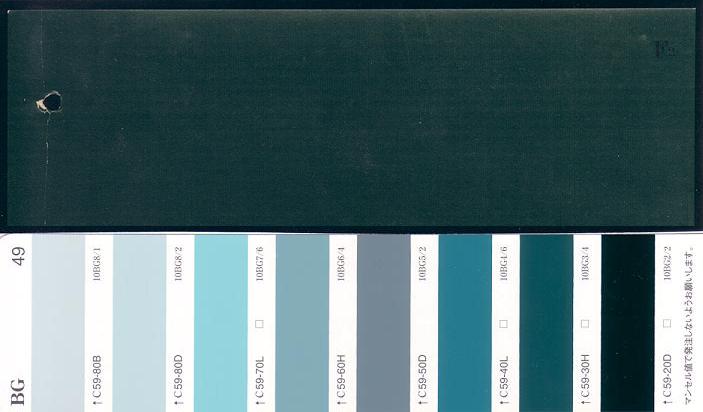
| F2 藍色 | Indigo | ||||||||
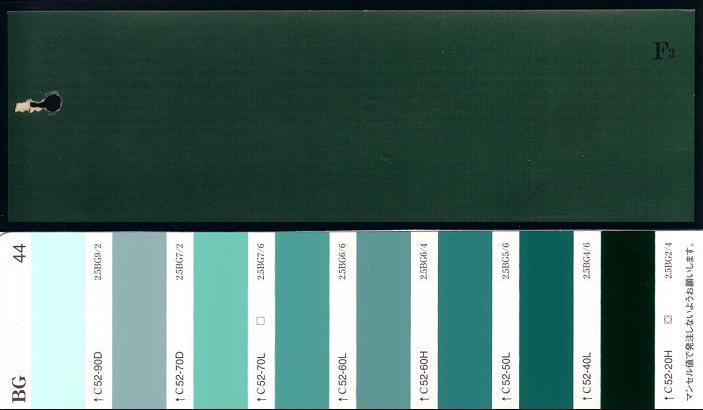
| F3 藍色 | Indigo | ||||||||
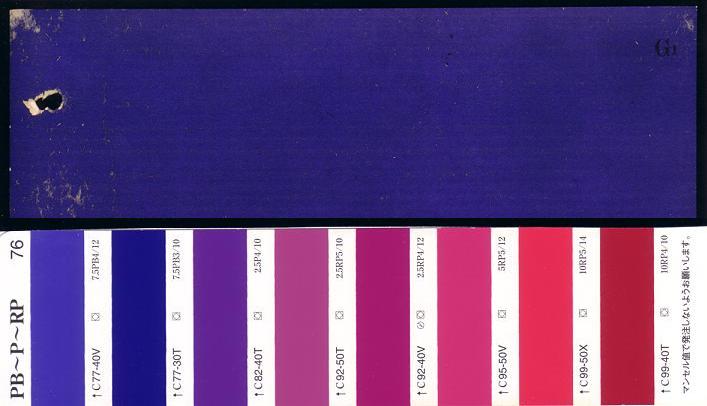
| G1 菫色 | Violet | ||||||||
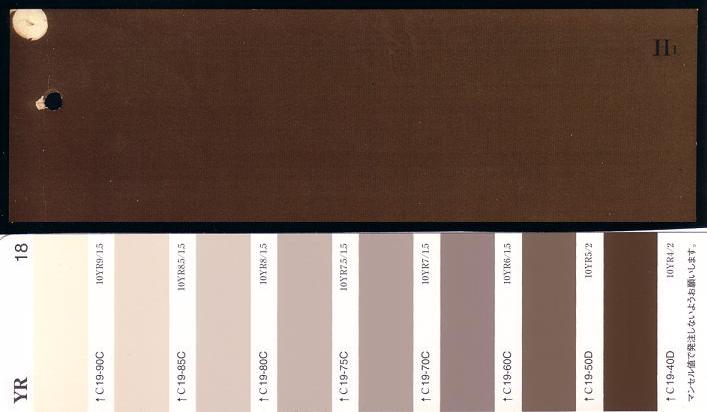
| H1 茶色 | Tea | ||||||||
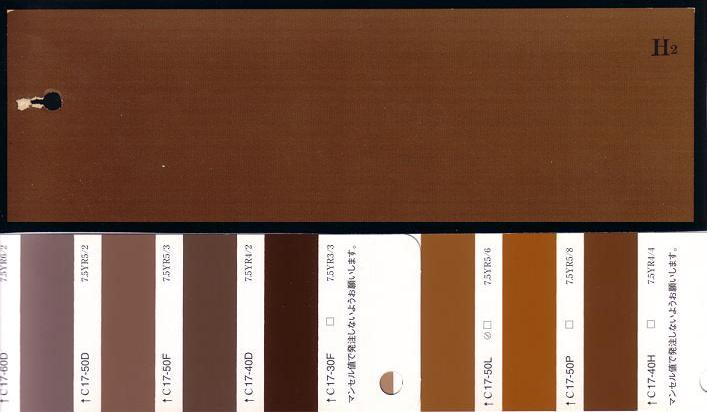
| H2 茶色 | Tea | ||||||||

| H3 茶色 | Tea | ||||||||
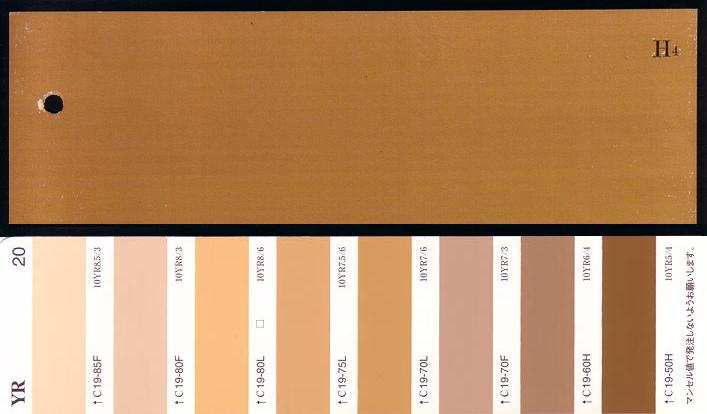
| H4 茶色 | Tea | ||||||||
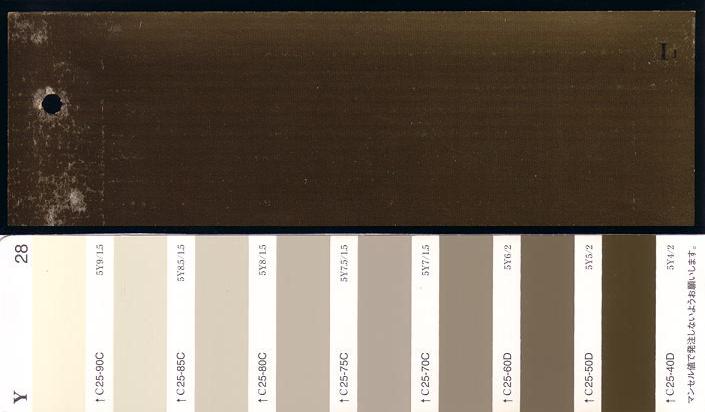
| I1 土色 | Soil | ||||||||
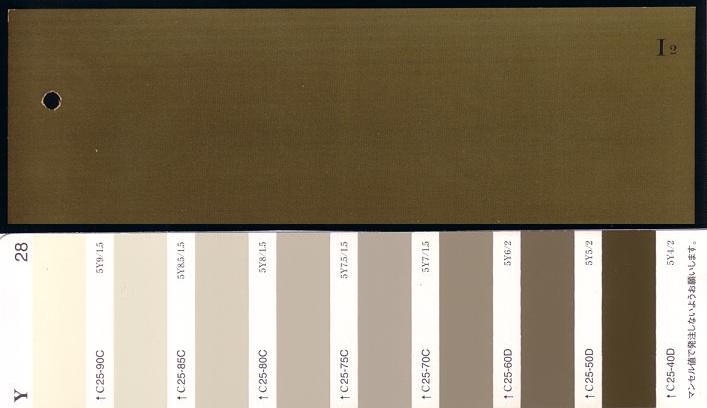
| I2 土色 | Soil | ||||||||
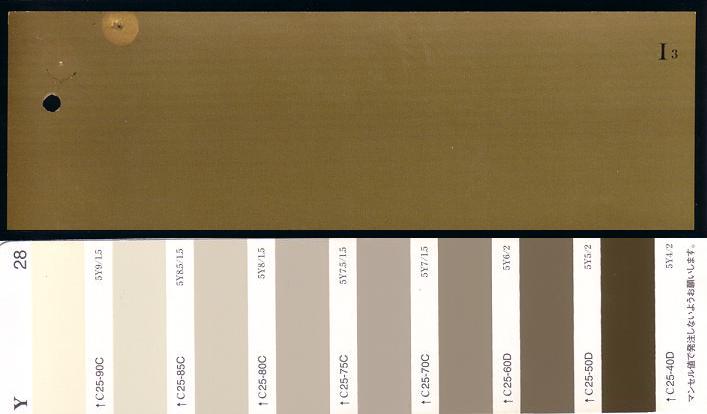
| I3 土色 | Soil | ||||||||

| J1 灰色 |
Mei kaishoku
Grey | ||||||||
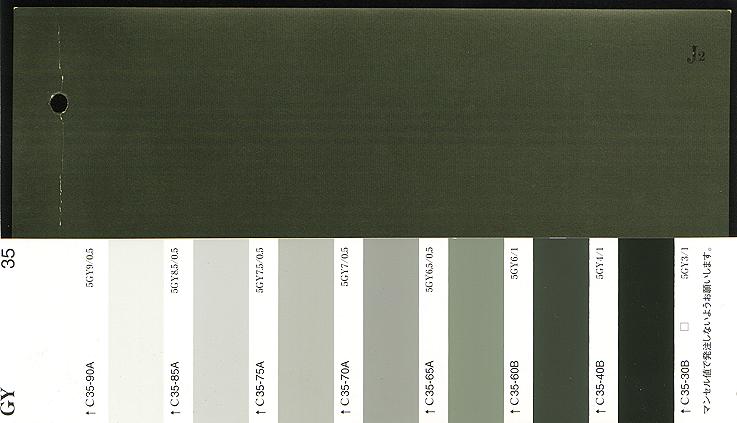
| J2 灰色 | |||||||||
| Experimentally used as an upper surface camouflage on A6M2 “ヨ-113 | ||||||||||

| J3 灰色 |
Haiiro
Ash Gray | ||||||||
| Sometimes said to be the famous early A6M overall camouflage, however this is unlikely as kugisho 0266 indicates this to be a distinct shade. Experimentally used as an upper surface camouflage on A6M2 “ヨ-105” as mono, and with D1 on “ヨ-107”. In 1944, D1 over J3 was accepted as the standard IJN camouflage pattern. front cover of engine gear reduction casings | ||||||||||
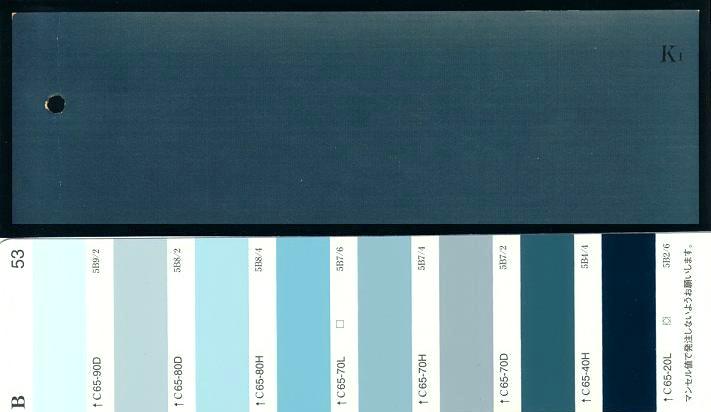 | K1 灰青色 | Gray Green | ||||||||
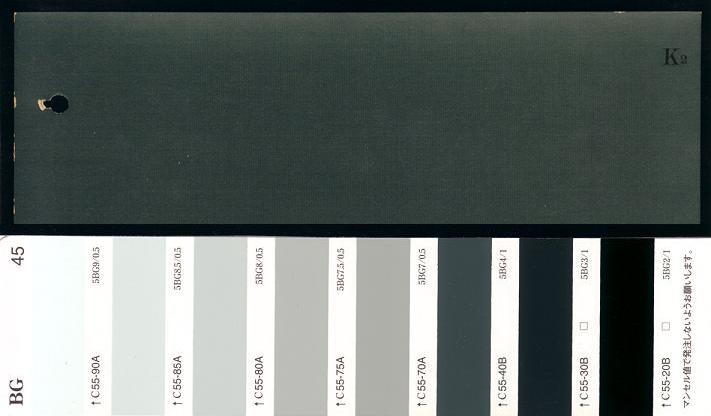 | K2 灰青色 | Gray Green | ||||||||
 | K3 灰青色 | Gray Green | ||||||||
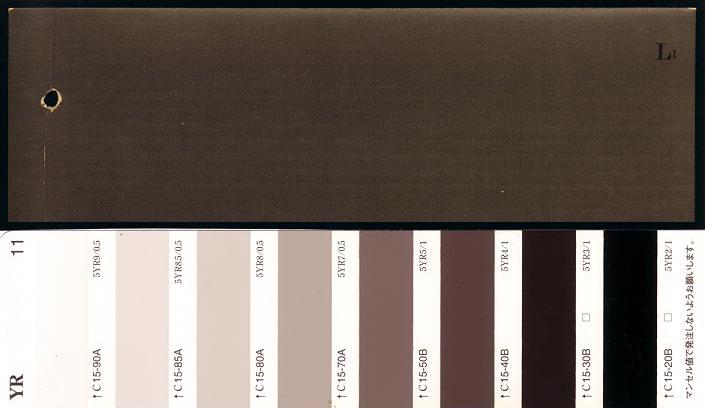 | L1 鼠色 | Rat grey | ||||||||
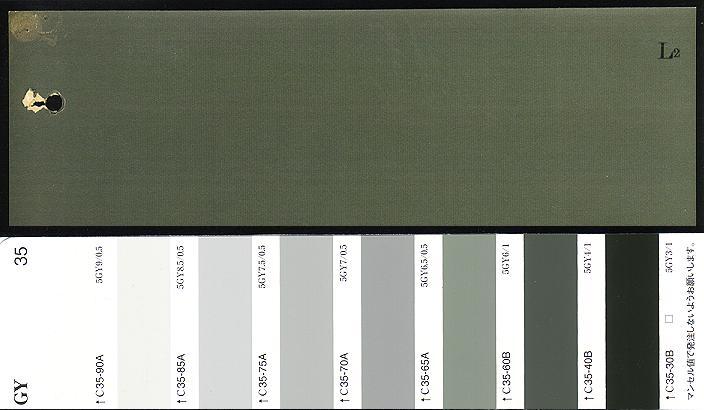 | L2 鼠色 | Rat grey | ||||||||
 | L3 鼠色 | Rat grey | ||||||||
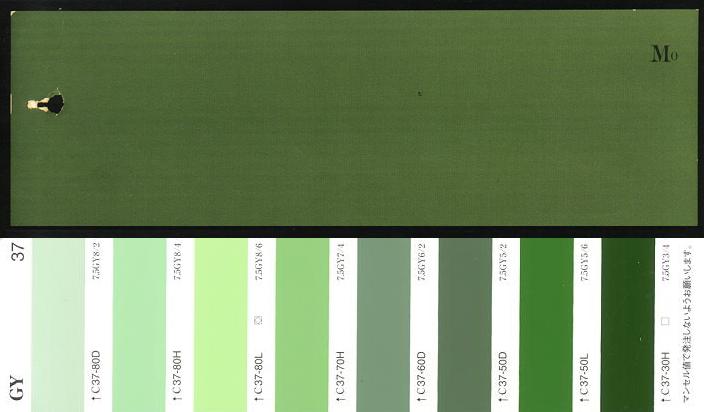 | M0 灰緑色 | Gray Green | XF-71 | MRP-430 MRP-413 | ||||||
| Official IJN cockpit interior colour | ||||||||||
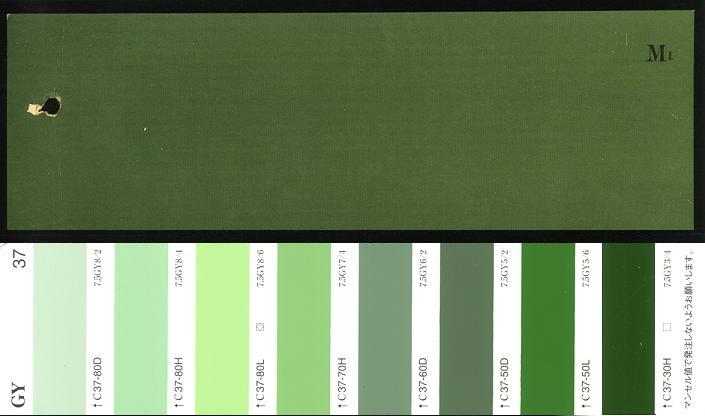 | M1 灰緑色 | Gray Green | XF-71 | MRP-413 | AK11897 RC307 AK2068 | |||||
| Official IJN cockpit interior colour Experimentally used as an upper surface camouflage on A6M2 “ヨ-151” | ||||||||||
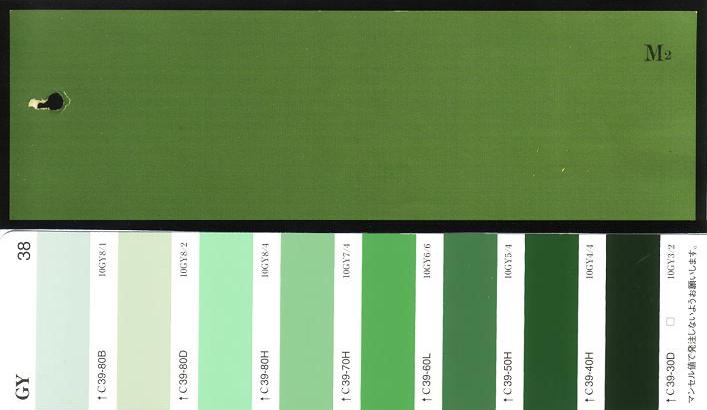 | M2 灰緑色 | Gray Green | MIG 270 | |||||||
| Mitsubishi Interior Colour | ||||||||||
 | M3 灰緑色 | Gray Green | C-127 | RC306 RC307 | MIG 269 | |||||
| Nakajima Interior Colour | ||||||||||
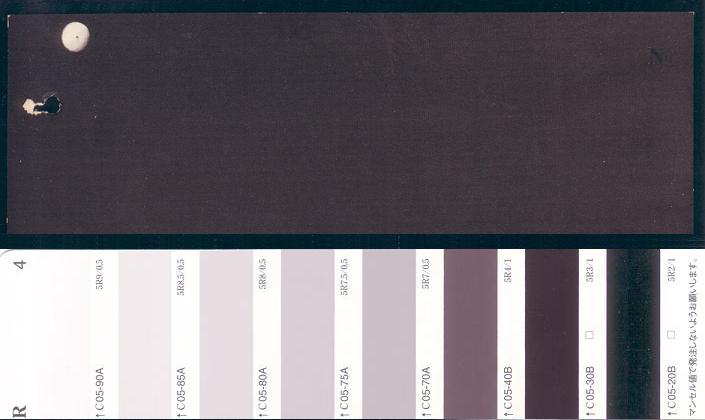 | N0 小豆色 | Adzuki Bean | C-131 | XF-64 | 71271 | HTK-*130 | MRP-431 | RC067 | MIG 913 | |
 | N1 小豆色 | Adzuki Bean | ||||||||
 | N2 小豆色 | Adzuki Bean | ||||||||
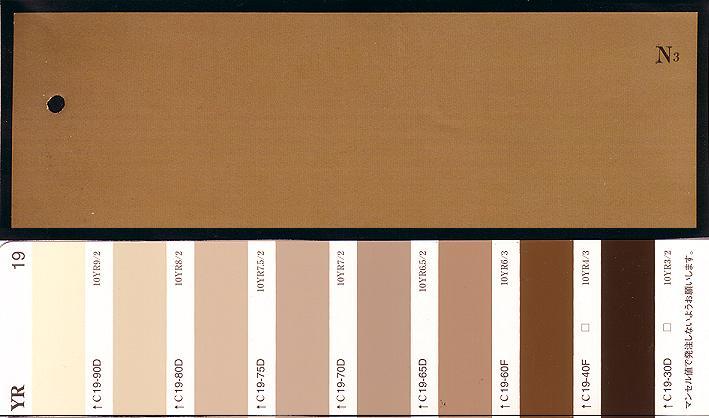 | N3 小豆色 | Adzuki Bean | ||||||||
| O1 白色 | White | |||||||||
| Markings | ||||||||||
| P1 銀色 | Silver | |||||||||
| Undersurface colour, alternative for J3 | ||||||||||
| Q1 黒色 | Blue Black | 71091 | HTK-*001 | MRP-432 | AK11895 AK2066 | MIG 227 | ||||
| The colour is almost black, but with a blueish tint Markings, Engine cowlings, Cockpit decking. | ||||||||||

Near the end of the war shortages were more and more common. As a result there was a push to standardize the paints between the army and navy air forces. As a result on February 5 1945 the “Japan Aircraft Standards No. 8606 Aircraft Paint color standard” was distributed ( 日本航空機規格規 第8606航空機用塗料色別標準 ). Not all colours in it were used. Very limited information of the application of this system is available as far as I’ve found.
Simular to Kari Kikaru 117, the colors are grouped by shade. As far as I’m aware no official names for the colours exists, just for the shades.
| Swatch | Code | Colour | L*a*b* colour | Gunze | Tamiya | Vallejo |
|---|---|---|---|---|---|---|
 | 1-1 緑色 | Green | L*36.05 a*0.06 b*6.41 | |||
| Replaced Army #7 (Identical) Used on upper surface camouflage by army aircraft. | ||||||
 | 1-2 緑色 | Green | L*31.72 a*-4.56 b*3.89 | |||
| Replaced Army #27 (Similar), Navy D2 (Identical) Used on upper surface camouflage by navy aircraft. Used for on-board radio equipment | ||||||
 | 1-3 緑色 | Green | L*35.27 a*-2.65 b*8.84 | |||
| Replaced Army #27 (Identical), Navy M1 (Similar) | ||||||
 | 1-4 緑色 | Green | L*46.80 a*-5.77 b*9.58 | |||
| Replaced Army #27 (Identical), Navy M1 (Similar) Anti glare coating for navy cockpits used for engine parts | ||||||
 | 1-5 緑色 | Green | L*39.04 a*-15.18 b*10.72 | |||
| Replaced Army #27 (Identical), Navy M1 (Similar) | ||||||
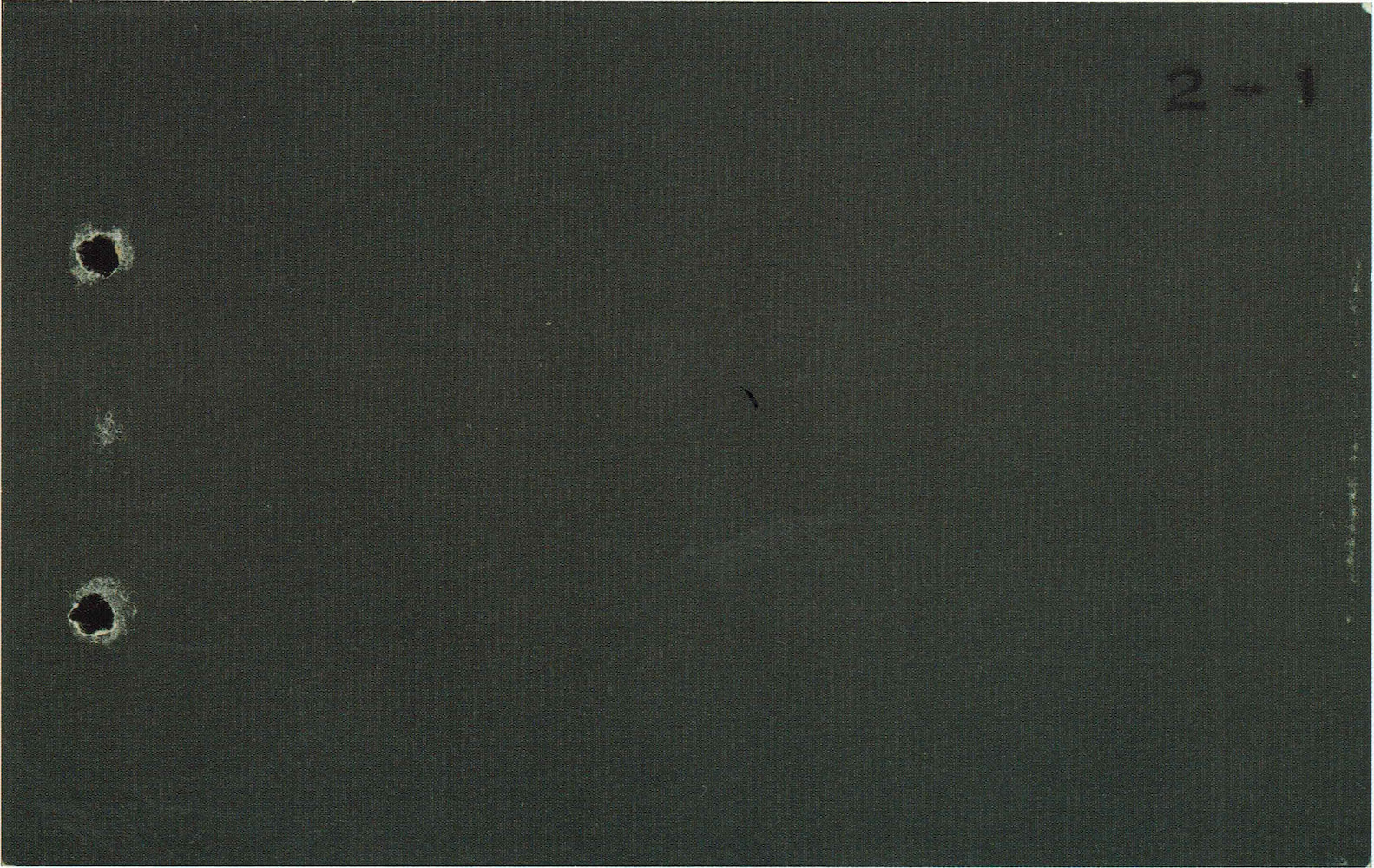 | 2-1 灰色 | Grey | L*32.37 a*-0.32 b*-0.89 | |||
| Replaced Army #3 (Identical) | ||||||
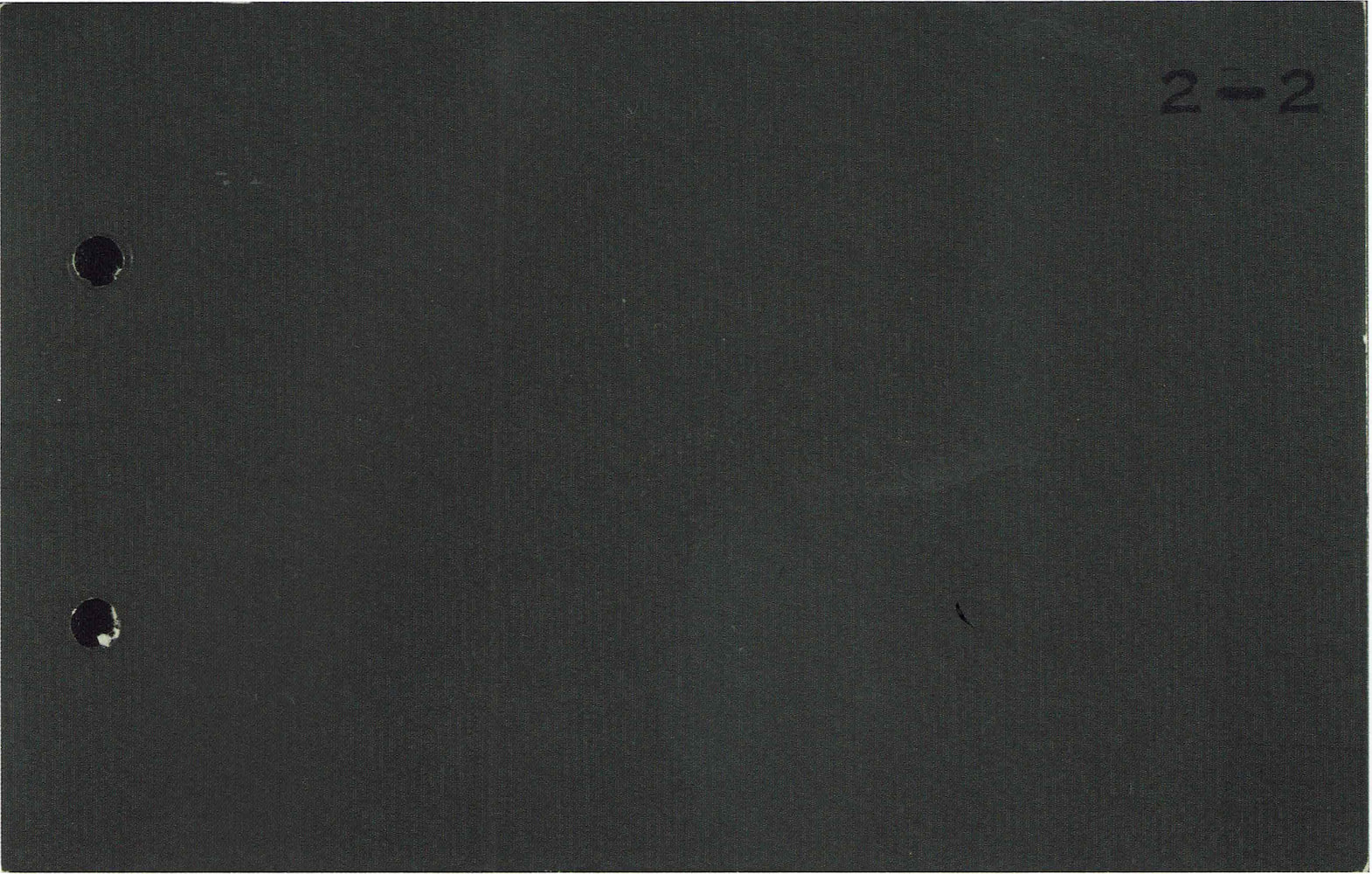 | 2-2 灰色 | Grey | L*33.30 a*-0.06 b*3.45 | |||
| Replaced Army #27 (Identical), Navy M1 (Similar) Usage unknown. Very similar in colour to 1-1 | ||||||
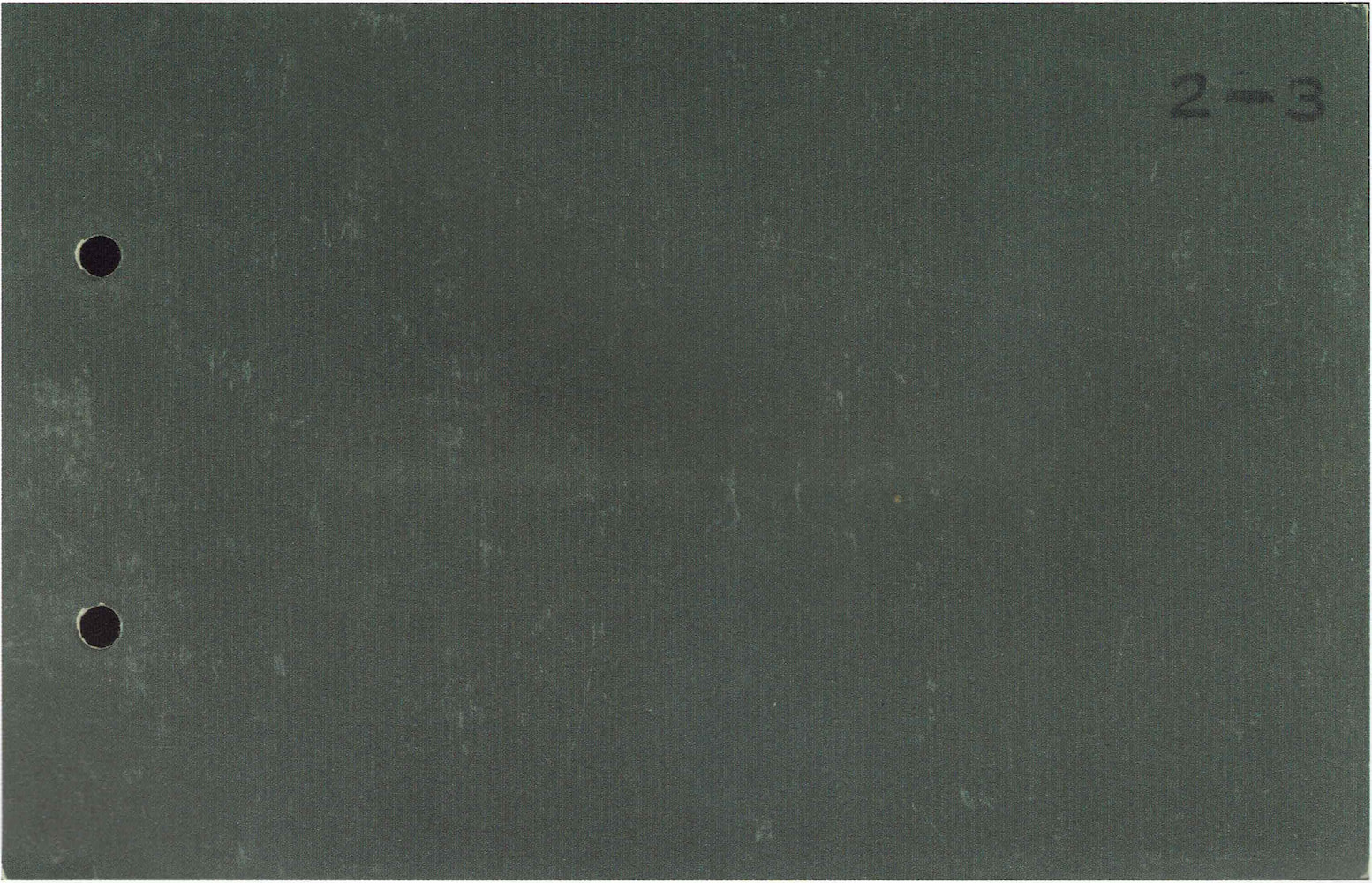 | 2-3 灰色 | Grey | L*37.52 a*-1.67 b*3.71 | |||
| Replaced Army #27 (Identical), Navy M1 (Similar) | ||||||
 | 2-4 灰色 | Grey | L*52.25 a*-3.78 b*-4.19 | |||
| Replaced Army #27 (Identical), Navy M1 (Similar) | ||||||
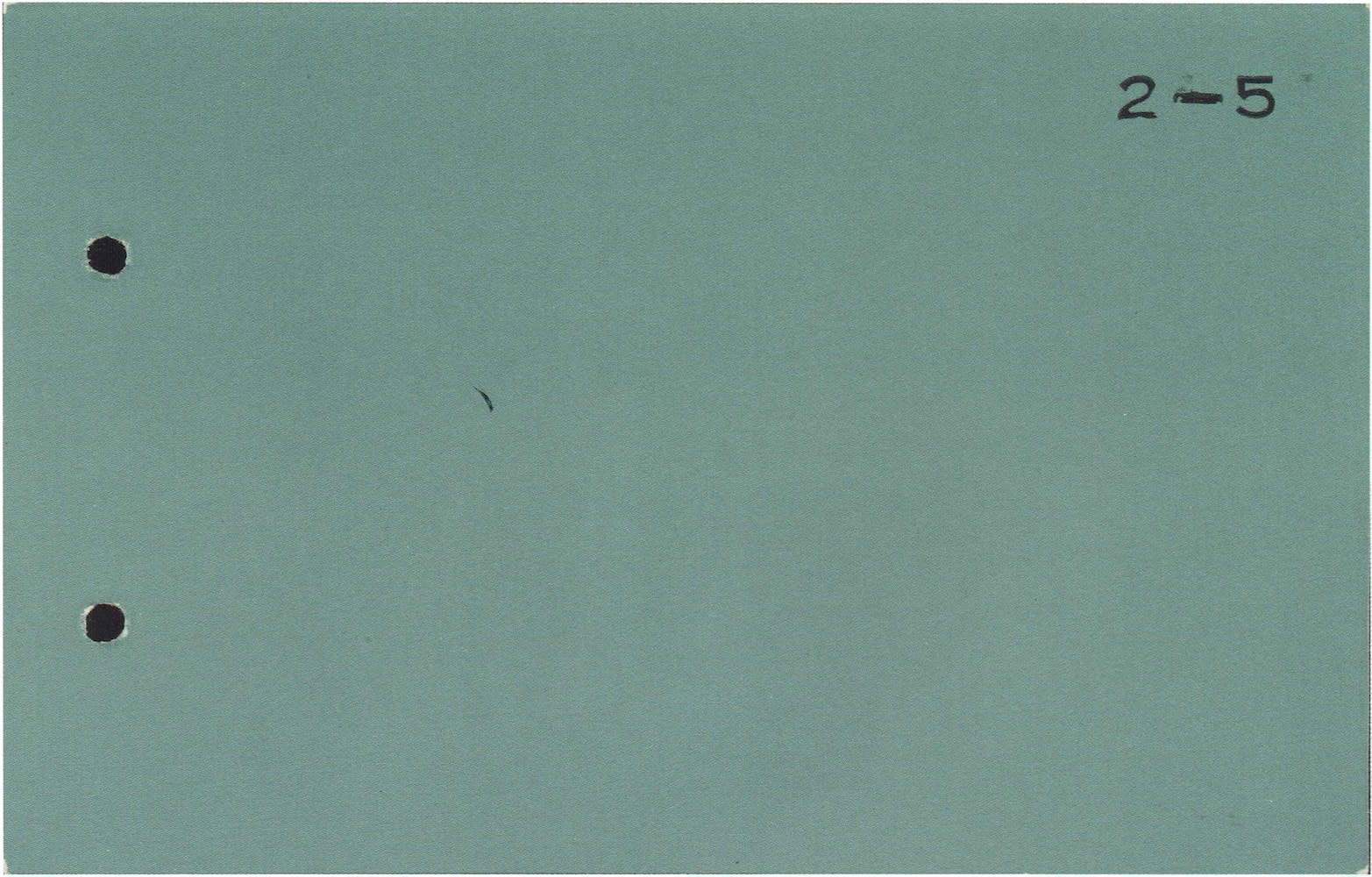 | 2-5 灰色 | Grey | L*55.77 a*-7.77 b*-0.27 | |||
| Replaced Army #17 (Similar), Navy K3 (Identical) | ||||||
 | 2-6 灰色 | Grey | L*56.82 a*-0.52 b*5.26 | |||
| Replaced Army #27 (Identical), Navy M1 (Similar) Camouflage colour for army and navy aircraft front cover of engine reduction gear casings. | ||||||
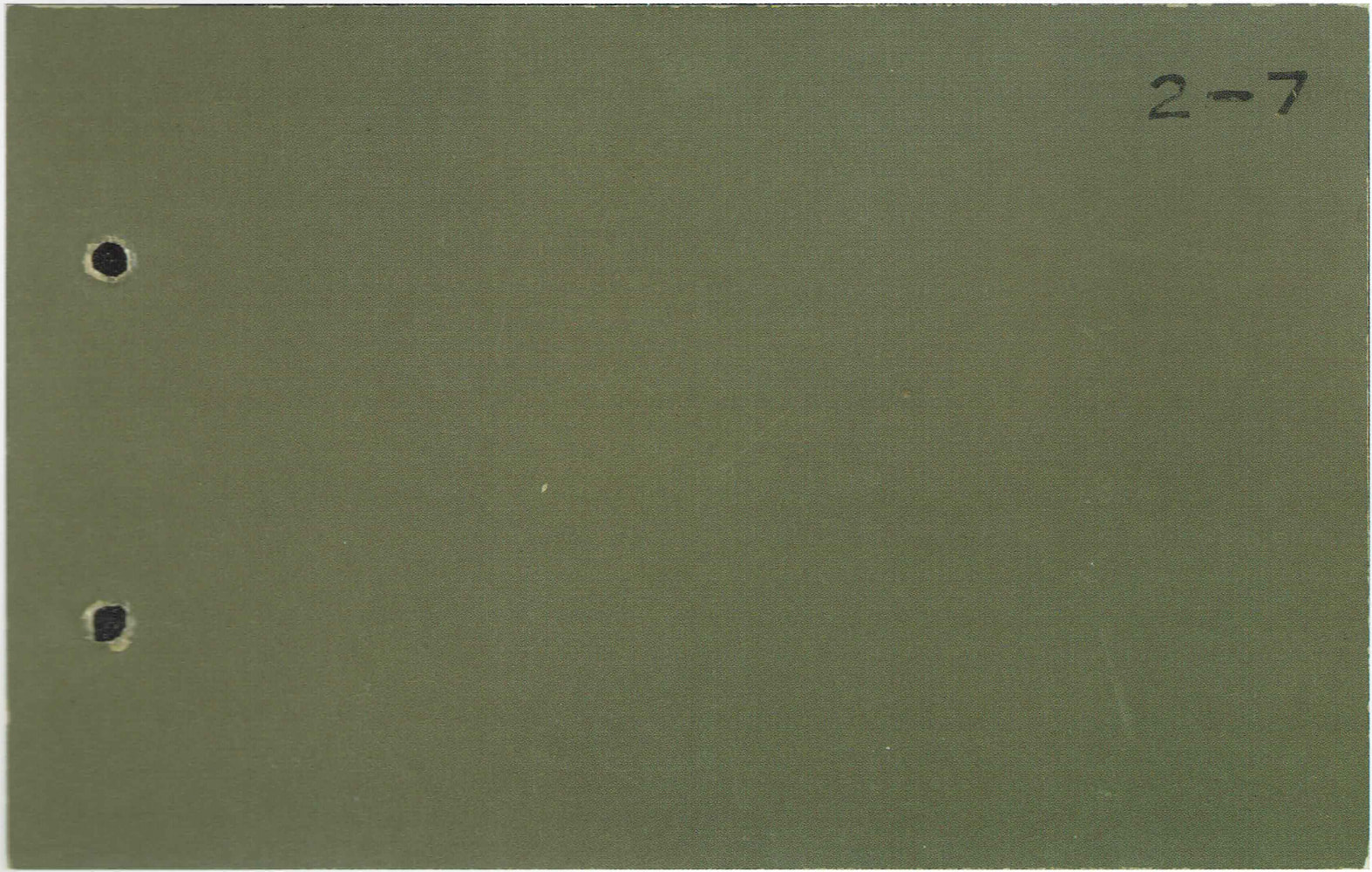 | 2-7 灰色 | Green | L*44.00 a*1.83 b*9.64 | |||
| Replaced Army #27 (Identical), Navy M1 (Similar) Usage unknown | ||||||
 | 3-1 褐色 | Dark brown | L*28.32 a*3.51 b*2.88 | |||
| Replaced Navy N0 (Identical) Used on propellers for army and navy aircraft | ||||||
 | 3-2 褐色 | Dark brown | L*37.66 a*24.28 b*15.49 | |||
| Replaced Army #4 (Similar), Navy A3 (Identical) Primer on metal surfaces Intermediate coat on fabric surfaces | ||||||
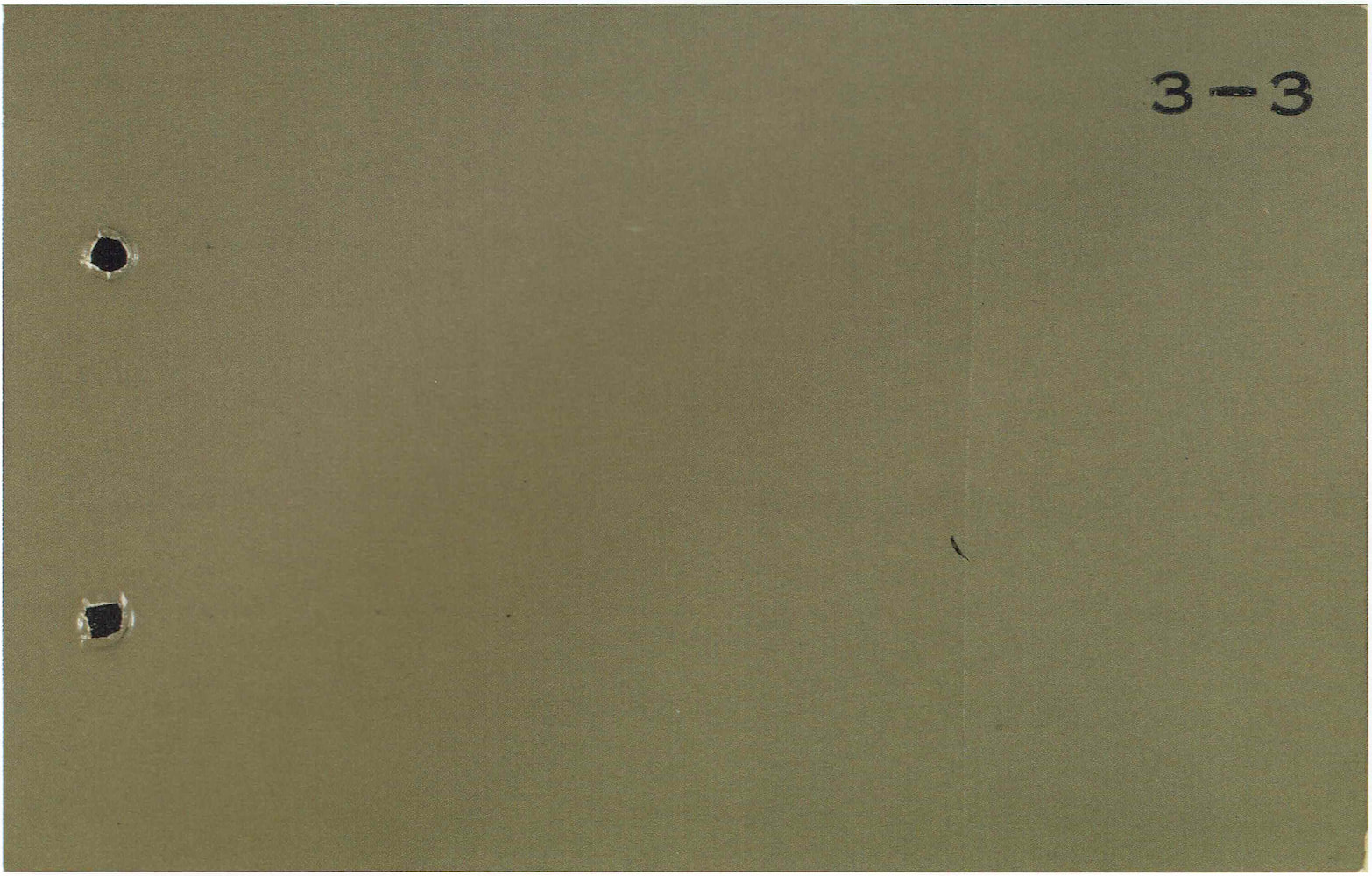 | 3-3 褐色 | Dark brown | L*52.3 a*2.91 b*14.96 | |||
| Replaced Navy I3 (Identical) Usage unknown | ||||||
 | 4-1 黄色 | Yellow | L*62.49 a*31.35 b*55.46 | |||
| Replaced Navy C1 (Identical) Wing leading edge IFF bands of navy aircraft Overall colour on navy training and experimental aircraft | ||||||
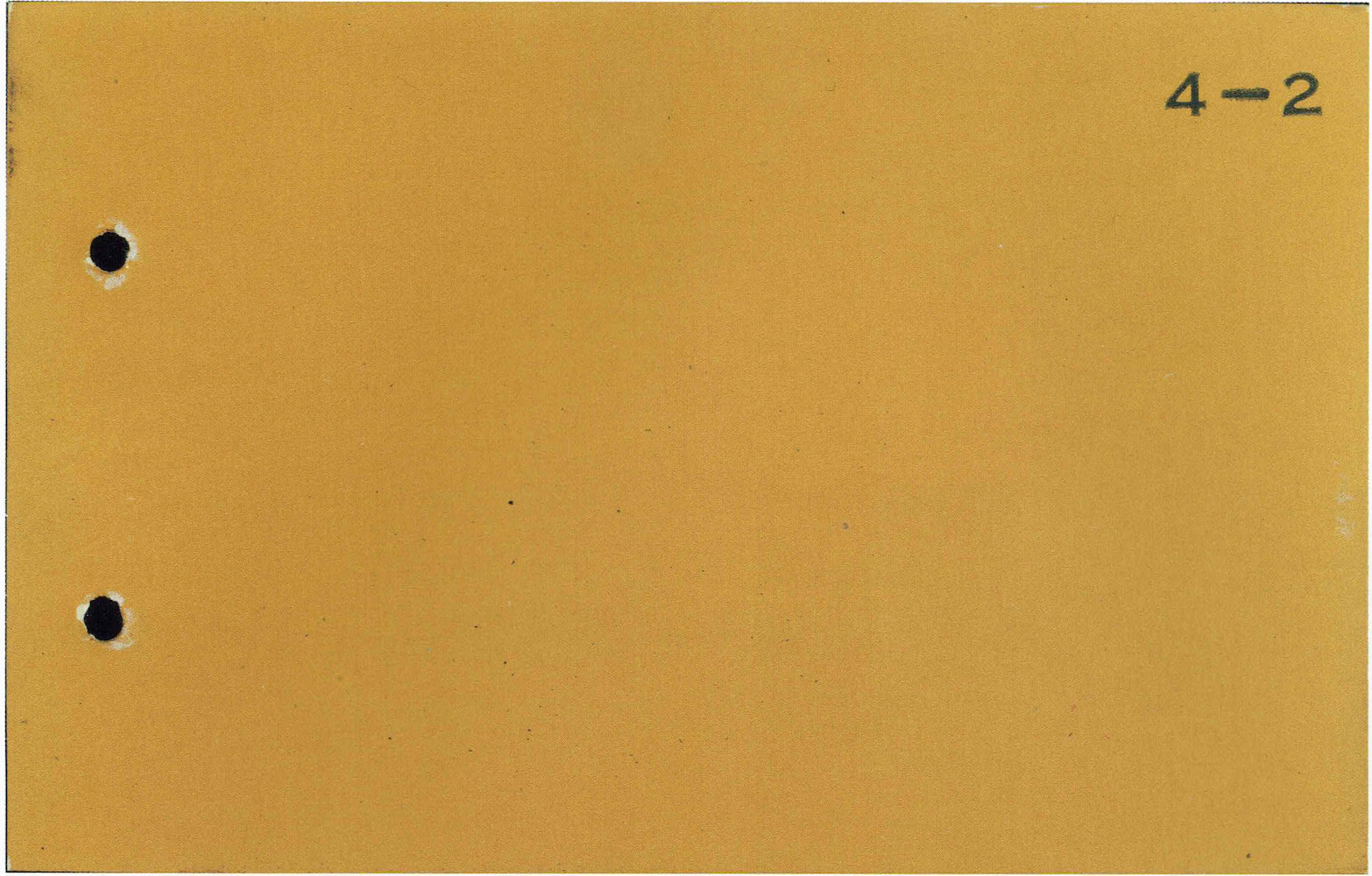 | 4-2 黄色 | Yellow | L*69.00 a*18.39 b*62.08 | |||
| Replaced Army #4 (Similar), Navy C3 (Identical) Radiator shutter levers on navy aircraft Warning stencils on army aircraft | ||||||
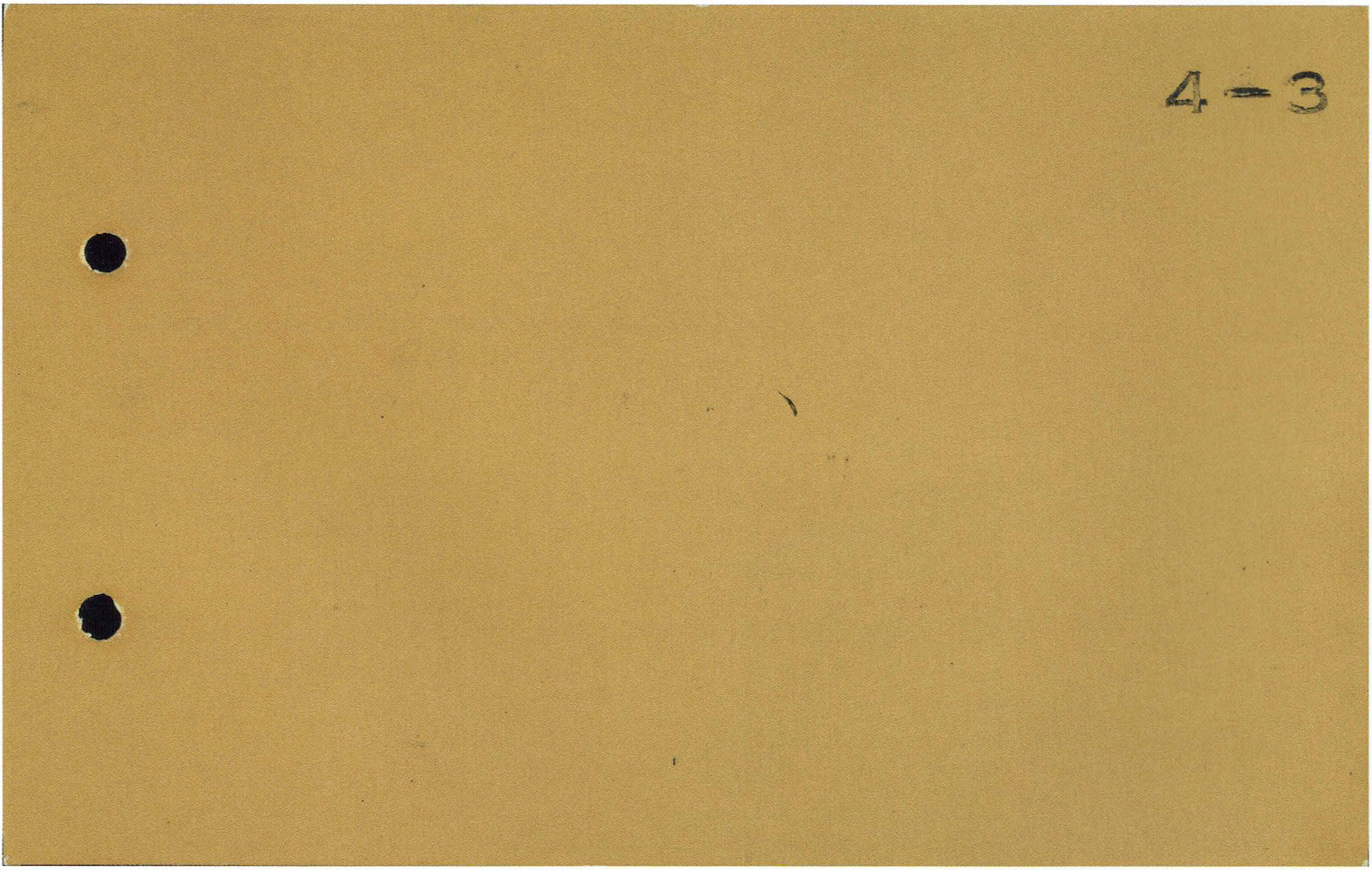 | 4-3 黄色 | Yellow | L*66.16 a*14.57 b*38.27 | |||
| Replaced Army #2 (Identical), Navy H4 (Similar) | ||||||
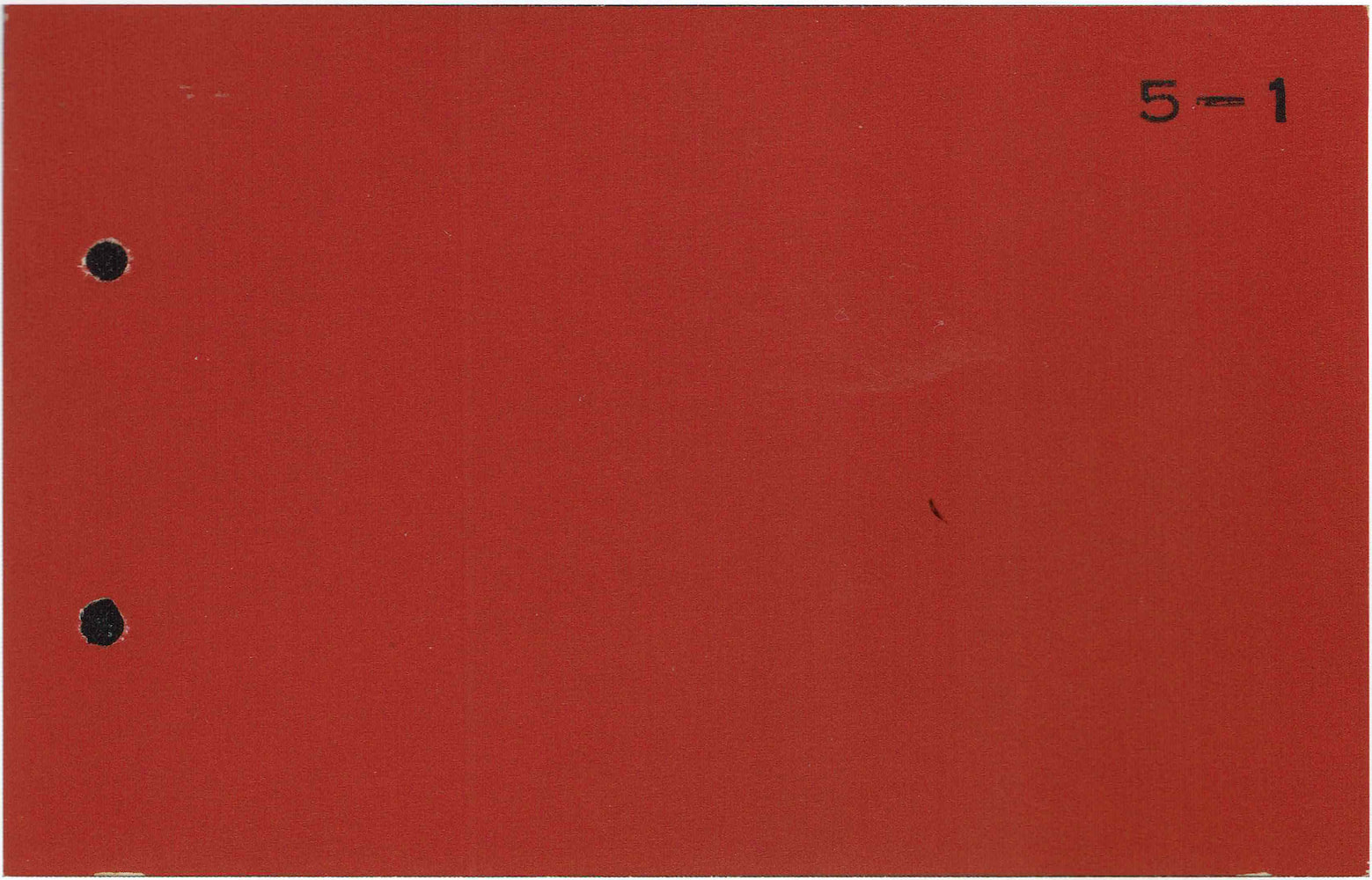 | 5-1 赤色 | Red | L*41.46 a*46.7 b*25.04 | |||
| Replaced Army #9 (Similar), Navy B2 (Identical) Hinomaru’s on navy aircraft | ||||||
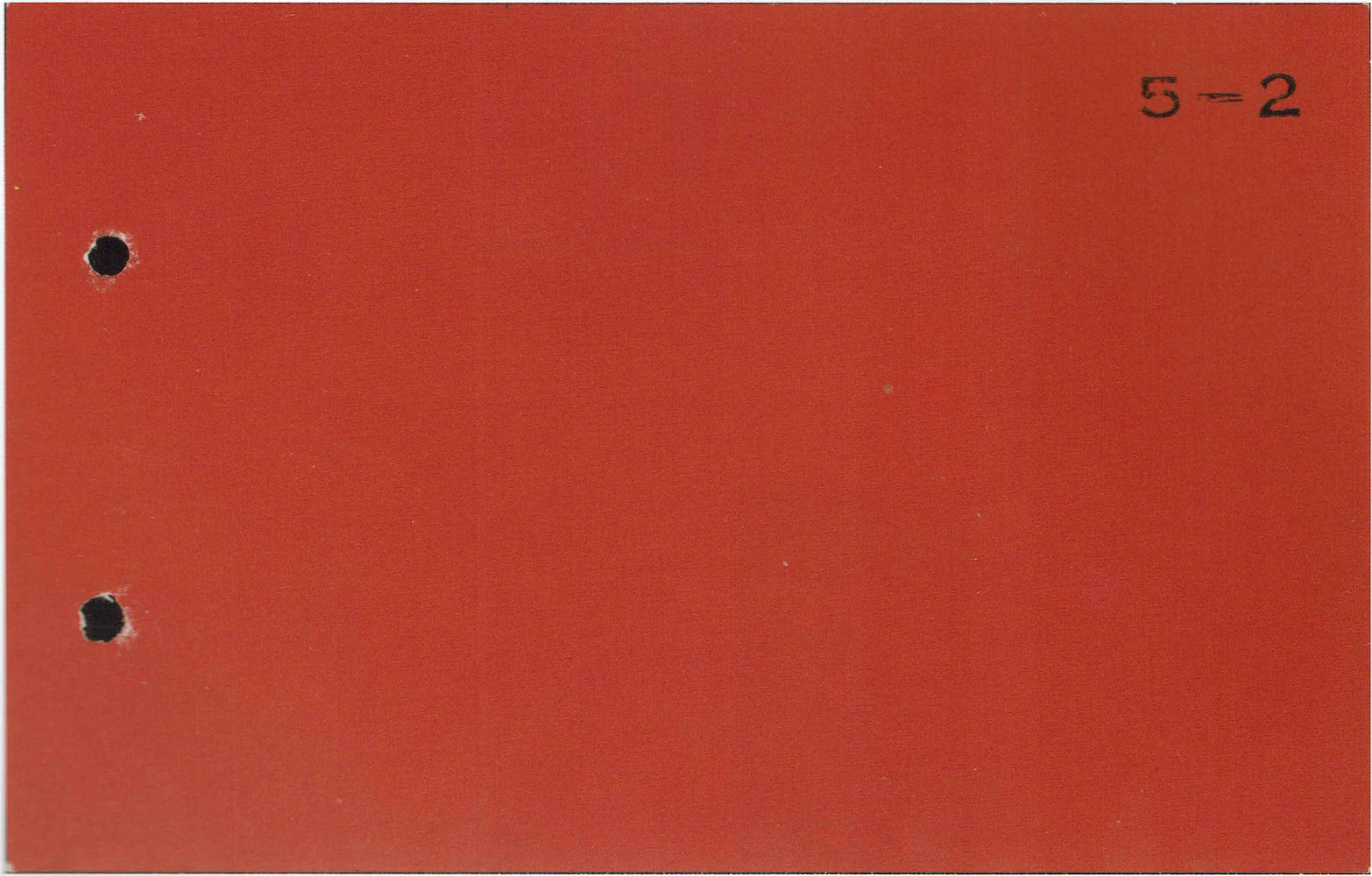 | 5-2 赤色 | Red | L*47.00 a*43.90 b*29.94 | |||
| Replaced Army #10 (Identical), Navy B3 (Similar) Hinomaru’s on army aircraft | ||||||
 | 6-1 青色 | Blue | L*22.89 a*3.47 b*-6.40 | |||
| Replaced Army #32 (Identical) Anti glare coating for army aircraft. Slight blue/purple hue, like eggplant. | ||||||
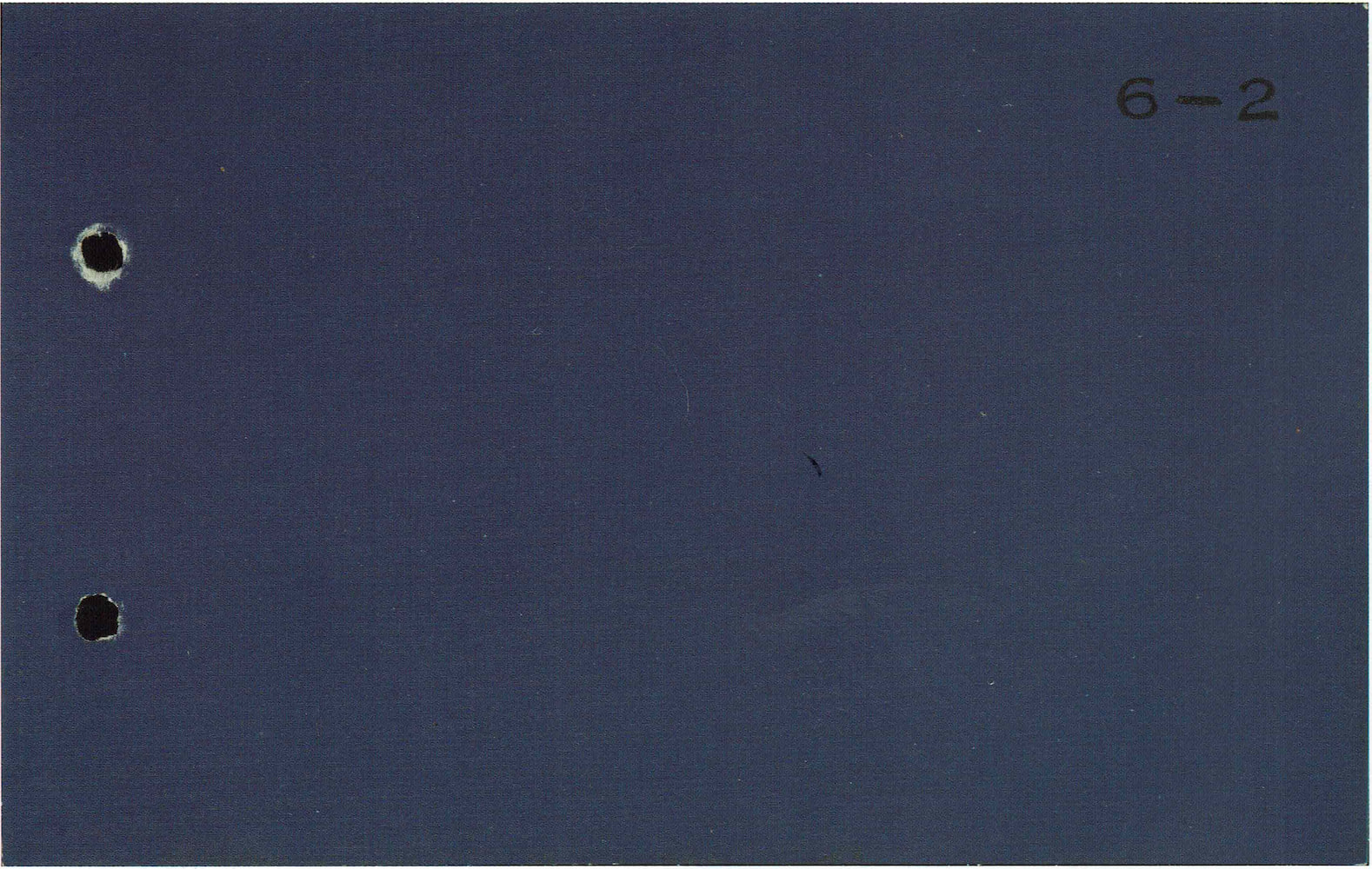 | 6-2 青色 | Blue | L*34.06 a*-0.50 b*-22.55 | |||
| Replaced Army #13 (Identical), Navy E1 (Similar) Coolant pipes | ||||||
 | 6-3 青色 | Blue | L*53.44 a*-13.63 b*-22.89 | |||
| Replaced Army #17 (Similar), Navy E3 (Identical) | ||||||
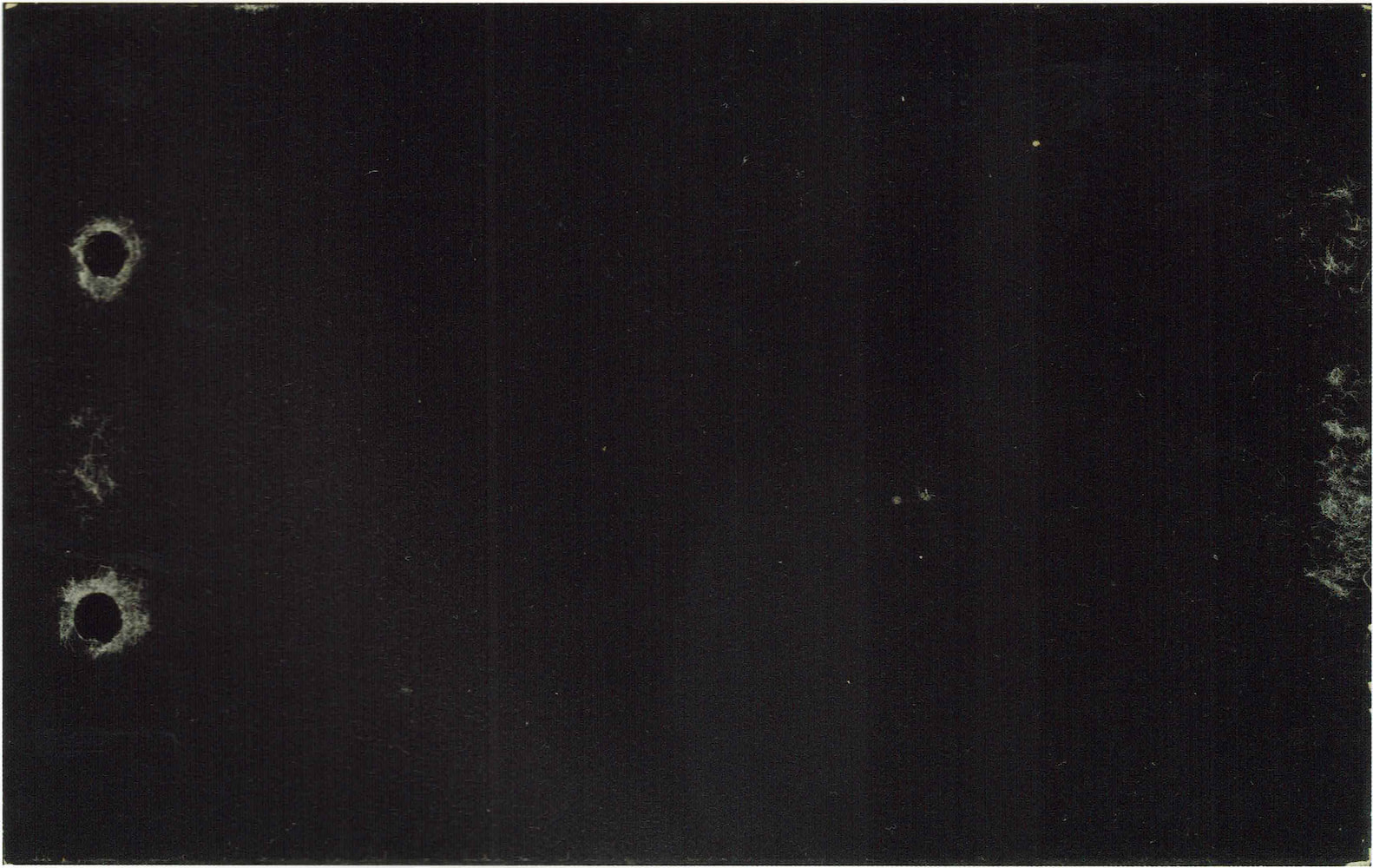 | 7-1 黒色 | Black | L*27.38 a*0.20 b*0.38 | |||
| Replaced Army #11 (Similar), Navy Q1 (Identical) Anti glare paint on cowlings, around cockpits | ||||||
 | 8-1 白色 | White | L*78.83 a*0.06 b*6.00 | |||
| eplaced Army #12 (Identical), Navy O1 (Similar) Markings on army and navy aircraft | ||||||
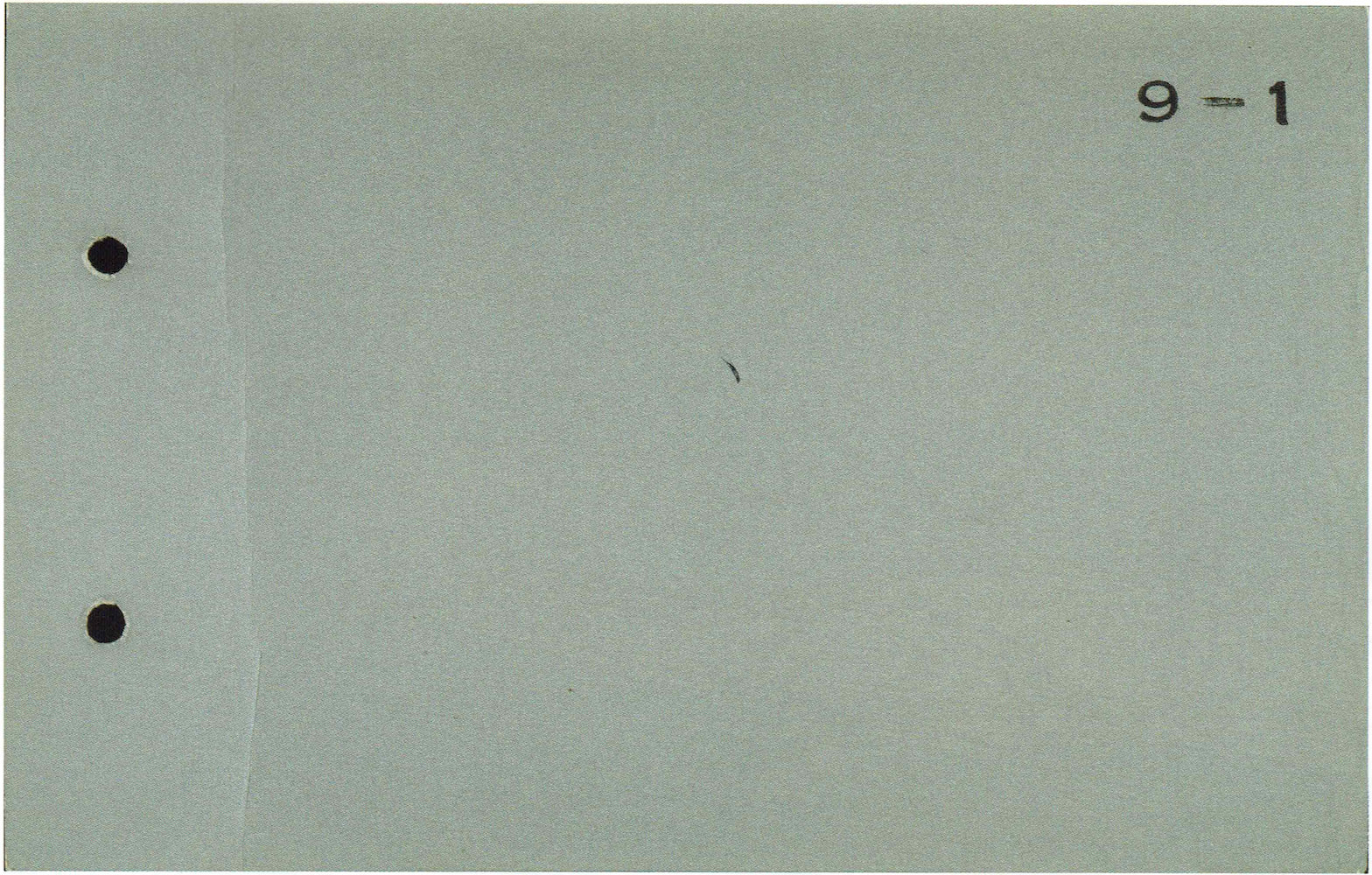 | 9-1 銀色 | Silver | L*78.11 a*-0.63 b*-0.69 | |||
| Replaced Army #5 (Similar), Navy P1 (Identical) | ||||||
Aotake / 青竹
When discussing Japanese paints, Aotake will inevitably come up. So what is Aotake? Aotake was a translucent blueish green coating used for interior surfaces on both army and navy aircraft.
Aotake finds it’s roots in urushi varnishes, lacquers made from the sap of the Toxicodendron vernicifluum, the Chinese lacquer tree. These forms of Aotake would be used for the protection of armour. ‘Modern’ Aotake was developed early 1930’s. For the army it was officially introduced on the 3rd of March 1932.
Similar in usage to the American zinc chromate, this Japanese enamel coating was of superior quality. It however remains a mysterious paints. Virtually forgotten after the war until the ’80, few intact samples remain after more than 75 years. Most salvaged aircraft were stripped of their original paints, and/or repainted.
Translation
The controversy of Aotake starts with the name. If you were to pull the word through google translate, the individual kanji would translate as “blue” (青, ao) and “bamboo” (竹, take). However, this translates to “Green Bamboo”, and not blue.
So what causes this discrepancy? The short answer is that historically, Japanese didn’t quite see blue and green as separate colours. But to make a short story long:
In English, the rainbow has seven colours. But colours are a spectrum, and when actually looking at said rainbow, there are no sharp lines, just a blur of colours smoothly transitioning into the next. Where the arbitrary lines between colours are placed, where a colour ends and where a new one starts, sometimes differs from language to language. For example Russian sees light and dark blue as two distinct colours; Голубой (Goluboj, light blue) and Синий (Sinij, darker blue).
In ancient time, Japanese didn’t have a distinction between blue and green, and both were called 青, ao. Later on, during the Heian period (794-1185) a distinct word for green was developed; 緑, midori. This however was still seen as a shade of aoi, 青, with the latter encompassing both colours. Similar to how in English crimson and maroon would still be seen as a shades of red.
The split to two separate colours didn’t happen until after the second world war (maybe due to globalization?) meaning WWII era ao, 青 would encompass the part of the colour spectrum that in English is referred as either blue or green. Even to this day certain green objects are still referred to as ao, 青 in modern Japanese, such as plants and and traffic lights. This is also the reason for the earlier mentioned translation difference. This means there is no correct translation of aotake, 青竹, as the English lexicon doesn’t have a word for a colour that encompasses the full range of WWII ao, 青 colour spectrum.
In some original Japanese documents the colour is also referred to as 青竹色, or aotakeshoku, where shoku, 色 means “colour”; blue green bamboo colour. It’s sometimes also written as 淡青色透明, thin translucent blue colour.
Colour
Aotake in as of itself is colourless, with pigments added to aid in creating an even, thick enough coating. It’s metallic sheen comes comes from the aluminium underneath.
As with most wartime primers and coating during the war, the exact shade wasn’t really important. Therefore there was no standardized amount of pigment added, and as a result, different variations of Aotake shade existed, ranging from the famous teal colour, to green and even brown.
The colour difference is sometimes suggested to be the result of the paint fading, as this was quite common among other paints. There is however very little concrete evidence to support this. On the contrary, samples show that exposed areas showed very little fading when compared to covered areas when examining surviving wrecks. That is not to say they would look exactly the same. Because new coatings of Aotake would be applied throughout the manufacturing process, even after assembly, the covered parts wouldn’t necessary look the same as the uncovered parts.
Application and Usage
The way Aotake was applied is different then western style primer application. Where the Americans for example applied their Zinc Chromate primer after assembly, the Japanese applied a layer Aotake after every step of the manufacturing process. When a part would be manufactured, it would receive a coat, and after assembly, it would for example receive a new coat. At the end there would be no metal visible
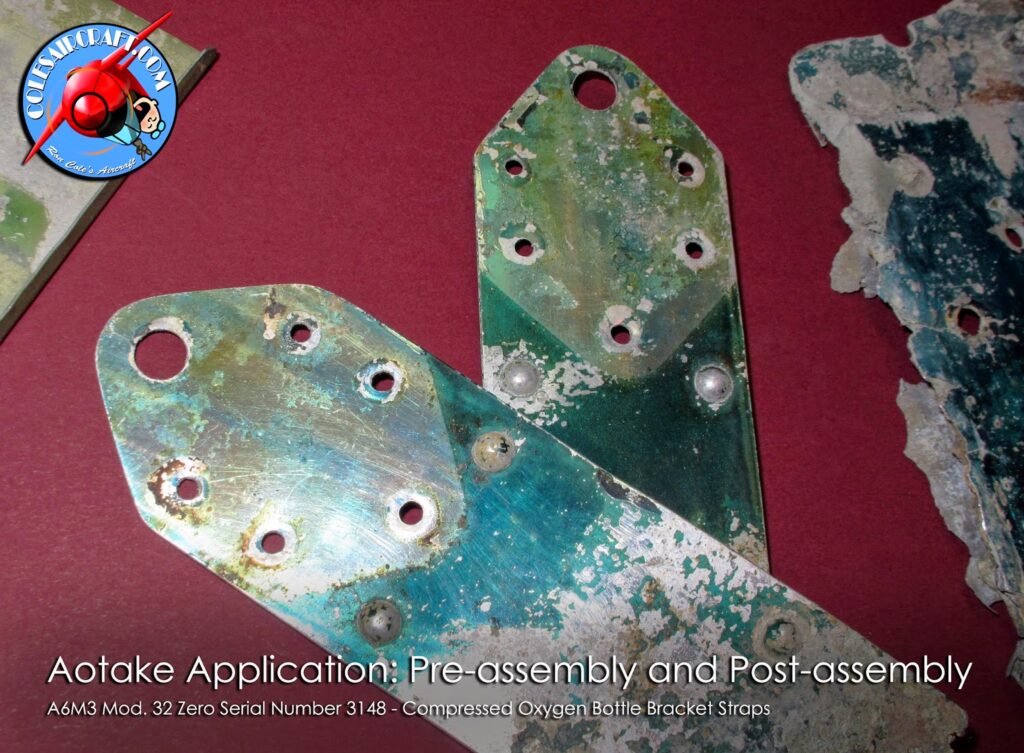
http://colesaircraft.blogspot.com
At the end of the manufacturing process, the plane would sometimes receive a matte black coating. The reason for this is unknown, it might have been further protection, or to reduce de glare of the Aotake.
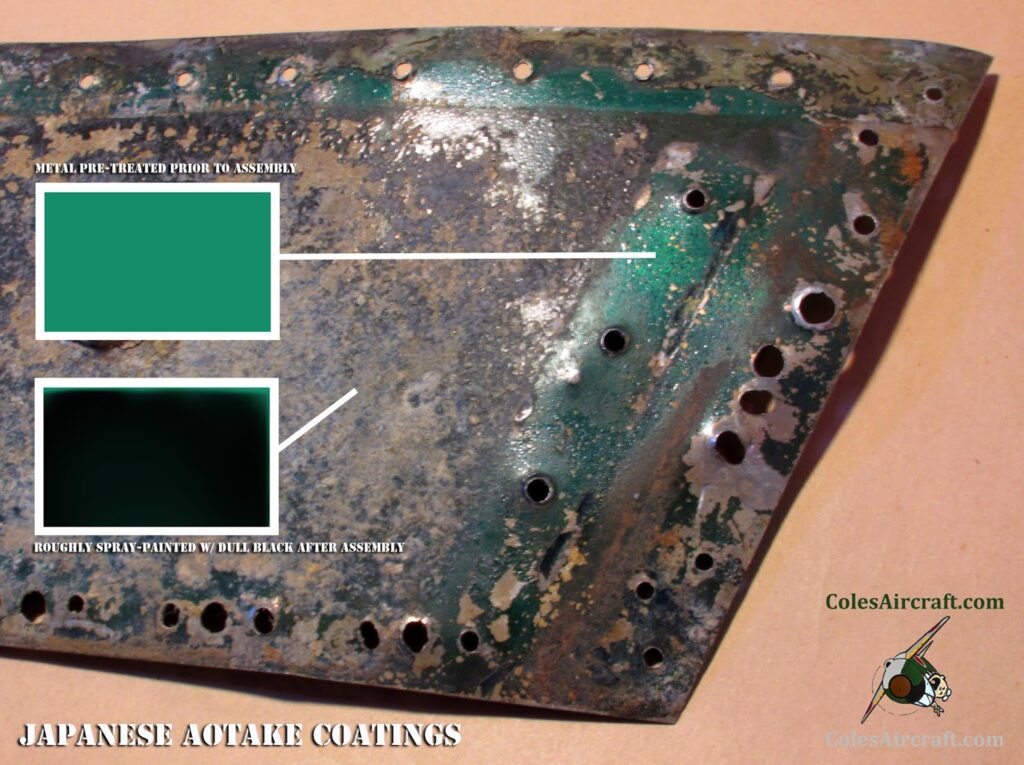
http://colesaircraft.blogspot.com
The Japanese aircraft industry was quite decentralized, especially in the later stages of the war to try to evade allied bombing. This sometimes resulted in different parts being produced at different locations by different subcontractors. These often had different batches of Aotake they used on their parts after their assembly. This resulted in aircraft often having a variety of different shades of Aotake. Below an example of two different shades of Aotake encountered on the main wing spar of a Zero.
As far as I’m aware, neither of these differences are accounted for with restored aircraft, which are painted with the ‘regular’ style of primer application; only after assembly. This results in a even, mono-colour Aotake layer, where in reality different parts would have different colours, with different amount of application.
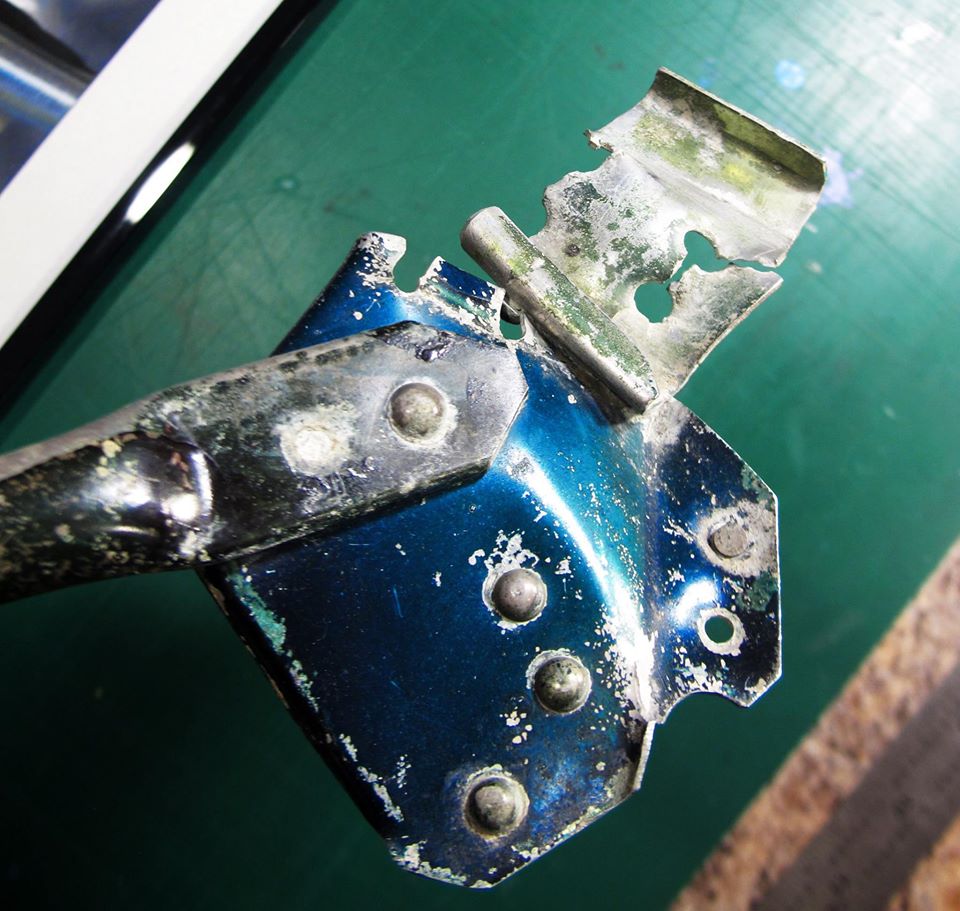
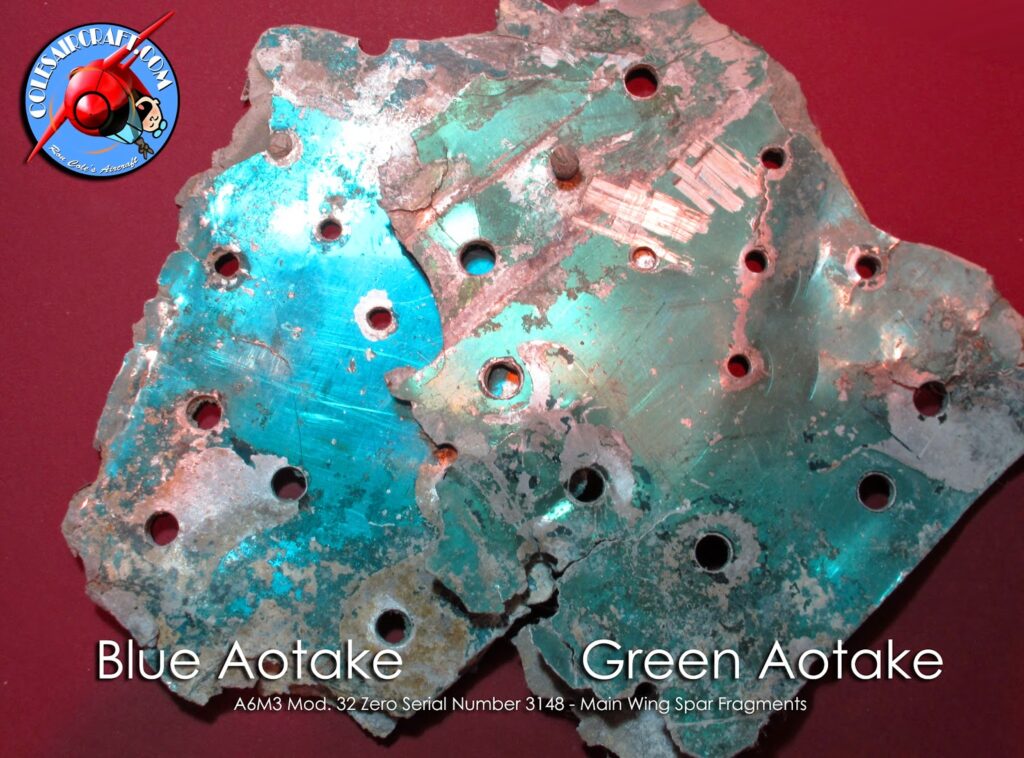
Photo by Ron Cole, used with permission.
http://colesaircraft.blogspot.com
Reproduction
When painting Aotake as a modeller, there is no definitive Aotake colour, so don’t sweat about it. Use an Aluminium base and spray this over with translucent blue, green or a mix of the two and the result will most likely be correct. Personally I use a blend of Tamiya X-25 and X-23, in whatever ratio i fancy that day.
Much more important for the modeller with an eye for perfection is to use multiple shades of Aotake. make the landing legs more greenish while making the wheel bays bluer for example.
Thorpe system
In the 1960’s, researcher Donald Thorpe tried to index the colours used by Japanese aircraft. His system was the first comprehensive system.
The system is created purely by examining old photographs, paint chips and other surviving artefacts and it’s naming is purely arbitrary as a result. Further research into these topics has proven some of the exact colours here wrong.
Army colours were denoted with an A and navy colours with an N. Some colours overlapped, but for readability I put them in both tables.
Army
| Code | Colour | FS equivalent | Gunze | Tamiya | Vallejo | Hataka | MRP | AK | Ammo MIG |
| A1 | Dark Green | FS-34094 | H302 C302 |
XF-67 | 70.612 | *152 | AK11873 RC230 |
||
| Single overall colour Upper surface camouflage Sometimes as anti-glare |
|||||||||
| A2 | Olive Green | FS-34088 | MIG 507 | ||||||
| Single overall colour Upper Surface camouflage Possibly #7; Ohryoku Nana Go Shoku |
|||||||||
| A3 | Medium Green | FS-34108 | |||||||
| Unit Markings colours Upper Surface camouflage Possibly IJA #39 Kusa Iro |
|||||||||
| A4 | Light green | FS-25352 | H-062 | XF-14 | |||||
| Upper and Lower Surface camouflage Possible the same colour as A5, #1 Hai Ryoku Shoku |
|||||||||
| A5 | Light gray Green | FS-25414 | XF-12 | ||||||
| Control surfaces of all metal aircraft Upper and Lower Surface camouflage Single overall colour Possible the same colour as A4, #1 Hai Ryoku Shoku |
|||||||||
| A6 | Dark Gray | FS-26132 | |||||||
| Single overall colour Upper Surface Camouflage |
|||||||||
| A7 | Medium Gray | FS-36300 | |||||||
| Single overall colour Upper and Lower Surface camouflage |
|||||||||
| A8 | Medium Blue Gray | FS-35177 | |||||||
| Single overall colour Upper and Lower Surface camouflage |
|||||||||
| A9 | Light Gray | FS-36650 | |||||||
| Single overall colour Upper and Lower Surface camouflage Landing gear assemblies |
|||||||||
| A10 | Light Blue Gray | FS-35550 | |||||||
| Lower Surface Camouflage | |||||||||
| A11 | Dark Brown | FS-20059 | C-131 | ||||||
| Upper Surface Camouflage Spinners and Propellers Unit Markings |
|||||||||
| A12 | Medium brown | FS-10075 | XF-64 | ||||||
| Upper Surface Camouflage Sometimes used as a primer |
|||||||||
| A13 (N12) |
Dull brown | FS-20061 | |||||||
| Primer Spinners and Propellers |
|||||||||
| A14 | light earth | FS-30475 | |||||||
| Upper Surface Camouflage Might be the same colour as A15 |
|||||||||
| A15 | Ivory yellow | FS-20260 | |||||||
| Upper Surface Camouflage Might be the same colour as A14 |
|||||||||
| A16 (N13) |
Yellow | FS-13655 | XF-3 | ||||||
| Wing leading edge Unit Markings colours Single overall colour of training aircraft Possibly a variation of #14 黄色 |
|||||||||
| A17 (N14) |
Deep yellow | FS-23538 #14 黄色 |
|||||||
| Wing leading edge Unit Markings colours Possibly a variation of #14 黄色 |
|||||||||
| A18 (N16) |
translucent blue Aotake |
FS-15125 | any%X-25 any%X-23 over bare metal coat |
||||||
| Interior Primer | |||||||||
| A19 (N18) |
Red Orange | FS-21400 | |||||||
| Single overall colour of training and experimental aircraft | |||||||||
| A20 (N19) |
Himomaru red weathered | FS-21136 | |||||||
| Hinomaru weathered | |||||||||
| A21 (N20) |
Hinomaru red fresh | FS-31350 | XF-7 | MRP-411 | |||||
| Hinomaru fresh Airframe waring stencils Unit Markings colours |
|||||||||
| A22 | dark blue | FS-35048 | |||||||
| Anti glare | |||||||||
| A23 (N21) |
medium blue | FS-35183 | |||||||
| Unit Markings colours Spinners |
|||||||||
| A24 (N22) |
blue-black | FS17038 | 50% H-055 50% H-002 |
X-18 | MRP-432 | ||||
| Anti glare Numerals and stencils overall surfaces for night aircraft |
|||||||||
| Natural metal | H-008 | XF-16 | |||||||
| Unpainted surfaces | |||||||||
| Code | Colour | FS equivalent | Mr. Color |
Tamiya | Vallejo | Hataka | MRP | AK | Ammo MIG |
| N1 | Black Green | FS-14056 | |||||||
| Single Overall Camouflage Upper Surface Camouflage Cowlings |
|||||||||
| N2 | Dark Green | FS-34058 | H-059 | XF-11 | |||||
| Upper Surface Camouflage | |||||||||
| N3 | Dark Gray Green | FS-34094 | |||||||
| Upper Surface Camouflage | |||||||||
| N4 | Light Gray Green | FS-24226 | |||||||
| Cockpit, Interior | |||||||||
| N5 | Light Olive Green | FS-34151 | |||||||
| Mitsubishi Cockpit colour | |||||||||
| N6 | Buff Green | FS-14255 | |||||||
| Rear Spars, Wheel wells, ect | |||||||||
| N7 | Black Gray | FS-27040 | |||||||
| Single Overall Camouflage Cowlings |
|||||||||
| N8 | Dark Gray | FS-36081 | |||||||
| Single Overall Camouflage Upper Surface camouflage |
|||||||||
| N9 | Medium Gray | FS-34201 | |||||||
| Single Overall Camouflage Undersurface |
|||||||||
| N10 | Light Gray | FS-26493 | XF-12 XF-76 |
71312 | |||||
| Single Overall Camouflage Undersurface Camouflage Unit Markings |
|||||||||
| N11 | Medium Brown | FS-26493 | XF-10 | ||||||
| Upper Surface Camouflage | |||||||||
| N12 | Red Brown | No close approximation | |||||||
| Exterior Primer | |||||||||
| N13 (A16) |
Medium Yellow | FS-20061 | XF-3 | ||||||
| Single Overall Camouflage of trainer aircraft | |||||||||
| N14 (A17) |
Deep Yellow | FS-13655 | |||||||
| Wing ID Markings, Unit Markings, Stencils | |||||||||
| N15 | Yellow Ochre | FS-23538 | 10%H-003 90%H-014 |
||||||
| Wing ID markings, Experimental Aircraft | |||||||||
| N16 (A18) |
Translucent Blue Aotake |
FS-15125 | any%X-25 any%X-23 over bare metal coat |
||||||
| Bare Metal Prime Coat | |||||||||
| N17 | Translucent Green Aotake |
No close approximation | any%X-25 any%X-23 over bare metal coat |
71419 | |||||
| Bare Metal Prime Coat | |||||||||
| N18 (A19) |
Red Orange | FS-21400 | |||||||
| Training, Experimental Rare Hinomaru |
|||||||||
| N19 (A20) |
Deep Red | FS-21136 | |||||||
| Hinomaru Unit Markings |
|||||||||
| N20 (A21) |
Medium Red | FS-31350 | XF-7 | ||||||
| Hinomaru Unit Markings |
|||||||||
| N21 (A23) |
Medium Blue | FS-35183 | |||||||
| Unit Markings | |||||||||
| N22 (A24) |
Black | FS-17038 | |||||||
| Unit Markings, Anti-Glare, Overall, Stencils | |||||||||
| Natural metal | |||||||||
| Single Overall Camouflage | |||||||||
| White | |||||||||
| Single Overall Camouflage | |||||||||
Sources & further reading
- Ishiguro, R., Januszewski, T., & Karnas, D. (2018). Japanese anti-submarine aircraft in the Pacific War. Sandomierz: Stratus sp.j.
- Mikesh, R. C. (2000). Japanese aircraft interiors, 1940-1945. Sturbridge, MA: Monogram Aviation Publications.
- Color identification Standard for Naval airplane –Temporary Specification No.117 Additional Volume.
- Japan Aircraft Standards No. 8606 Aircraft Paint color standard
- Research on Kariki 117 by Ryoichi Watanabe
http://angelof.web.fc2.com/subw117-1.htm - https://www.alternatewars.com/BBOW/Colors/Japanese_Aircraft_Colors_WWII.htm
- http://www.aviationofjapan.com/2019/12/army-prop-and-spinner-colours.html
- http://www.aviationofjapan.com/2008/04/j3-2-6.html
- https://plaza.rakuten.co.jp/zerosenochibo/diary/ctgylist/?ctgy=30
- http://www2.odn.ne.jp/~cdh88520/il2_1946_skin_color_index.html
- https://web.archive.org/web/20150727230123/http://maker-one.ddo.jp:8080/cdh88520/color_list_for_ww2fighters.html#c19
- https://roncole.net/blogs/ron-cole-coles-aircraft-aviation-art/12072261-japanese-world-war-ii-aircraft-aotake-paints
- http://colesaircraft.blogspot.com/2014/08/japanese-wwii-aircraft-aotake-primer.html
- http://www.aviationofjapan.com/2018/07/tom-halls-comment-associated-ideas.html
- https://giraku.com/2022-04-03 日本軍機迷彩塗装考その2~零戦の初期迷彩色/
- https://www.sohu.com/a/519095797_100140957
- http://www.j-aircraft.com/a6mresearch/accolors.htm
- https://plaza.rakuten.co.jp/satsukiyamazakur/diary/200807150000/
- https://ndlonline.ndl.go.jp/#!/detail/R300000001-I000007460147-00
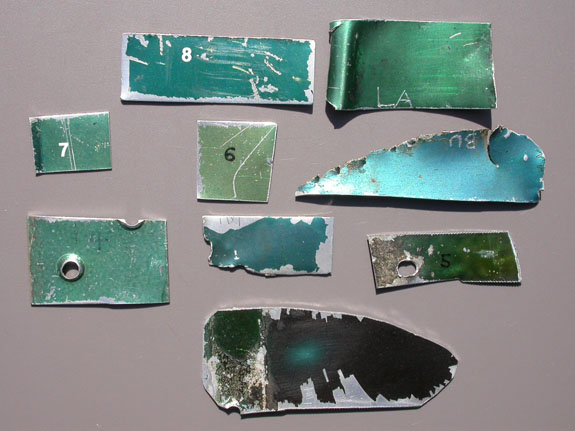
Great website. Thanks for collecting and posting all this info!
Thank you, I do like this good summary, particular Aotake.
Question: it seems to me to have understood that the Japanese applied a red-brown primer like A12-N12 on the wings and the fuselage before the final painting? Correct ?
Then, when wheathering the model, on hatches /maintenance bays and the parts on which the mechanics walk should appear this red-brown primer, then a bit of aluminum? Correct?
Regards